Leh, Ladakh Medical work
Day 7, 21 July 2018
A day of Palace, stupa and monastery
Ladakh was famous as a detour from the Silk Road where a lot of trading was done during that period - caravan from Persia and Pakistan bringing gems and carpets; China and Tibet came, in addition to silk, famous artifacts and vases highly prized in the West, from the south, Kashmir and India, spices and from Ladakh itself Pashmina shawls. In its heyday Ladakh was a prosperous city governed by the Namgyal dynasty from 12th century. It was only after 1947, when the British left that Ladakh’s royal family was left to fend for itself and having been invaded by the Dogra from Kashmir in the 19th century, the Ladakhi royal family vowed its allegiance to India and became part of India. The Namgyal royal family still held several palaces till today, although they no longer exert any more governing power.
 |
| Thisey Monastery |
Here is the VIDEO for Day 7
Thiksey monastery
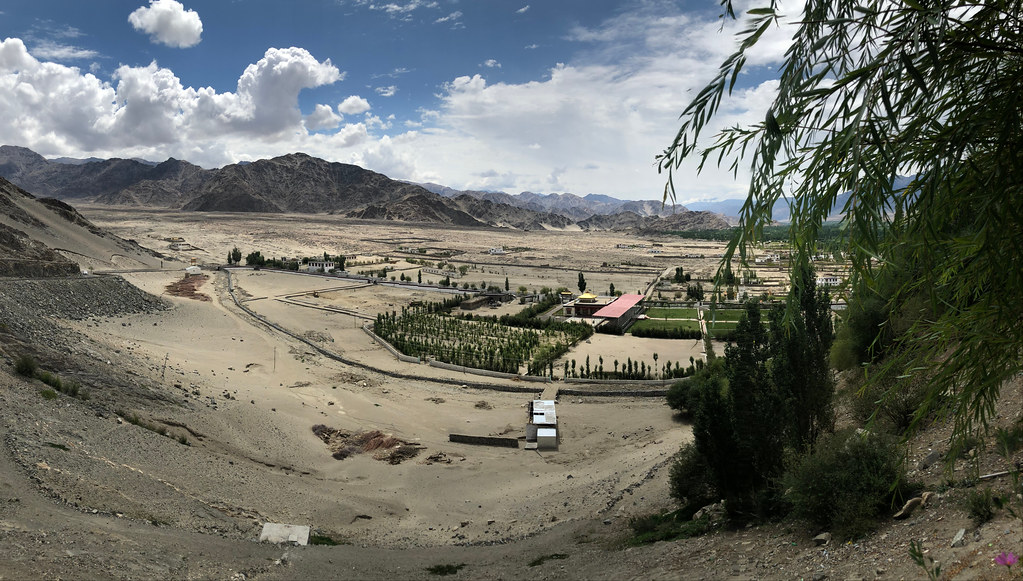 |
| Looking down from the entrace to Thiksey Monastery. Down below we could see the green fields irrigated by the Indus River and the Zangskar ranges in the distance. [Photo: Panorama by Serene lor] |
Our first destination was Thiksey Monastery. This was build by the Yellow hat Gelugpa master Tsongkhapa. It’s architecture was modelled after Potala Palace in Lhasa, Tibet.
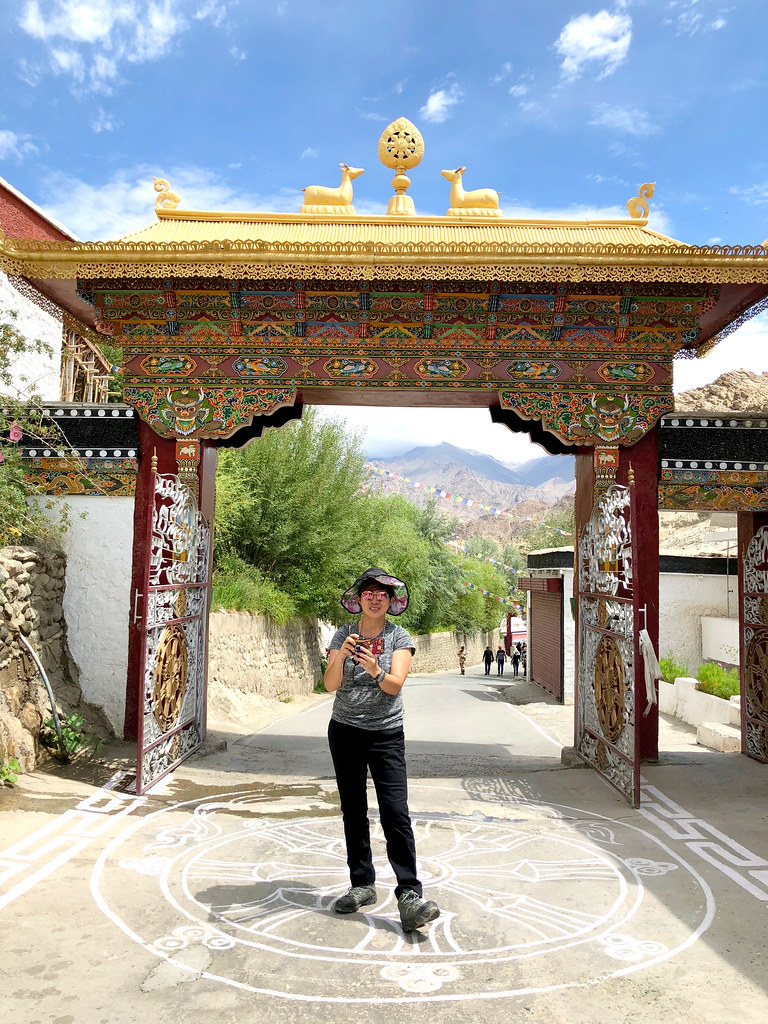 |
| Standing right in the mddle of Dharma wheel. |
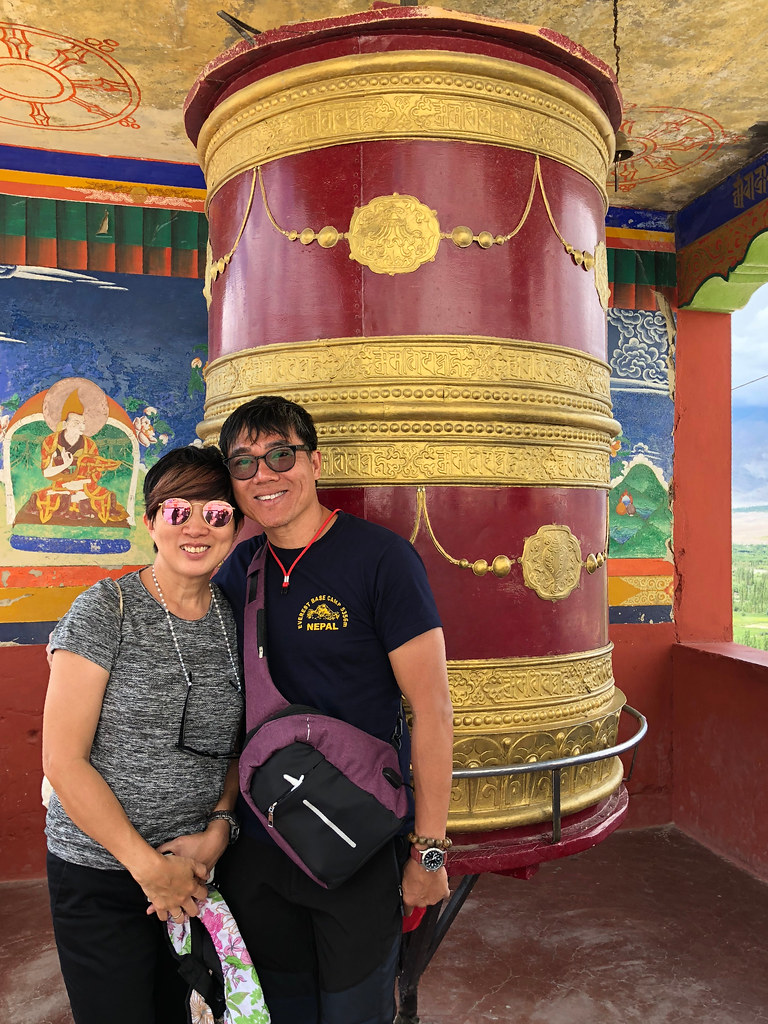 |
| We have seen so many prayer wheels as we drove along Ladakh, but this was the first one we actually had the chance to turn and make our prayers. |
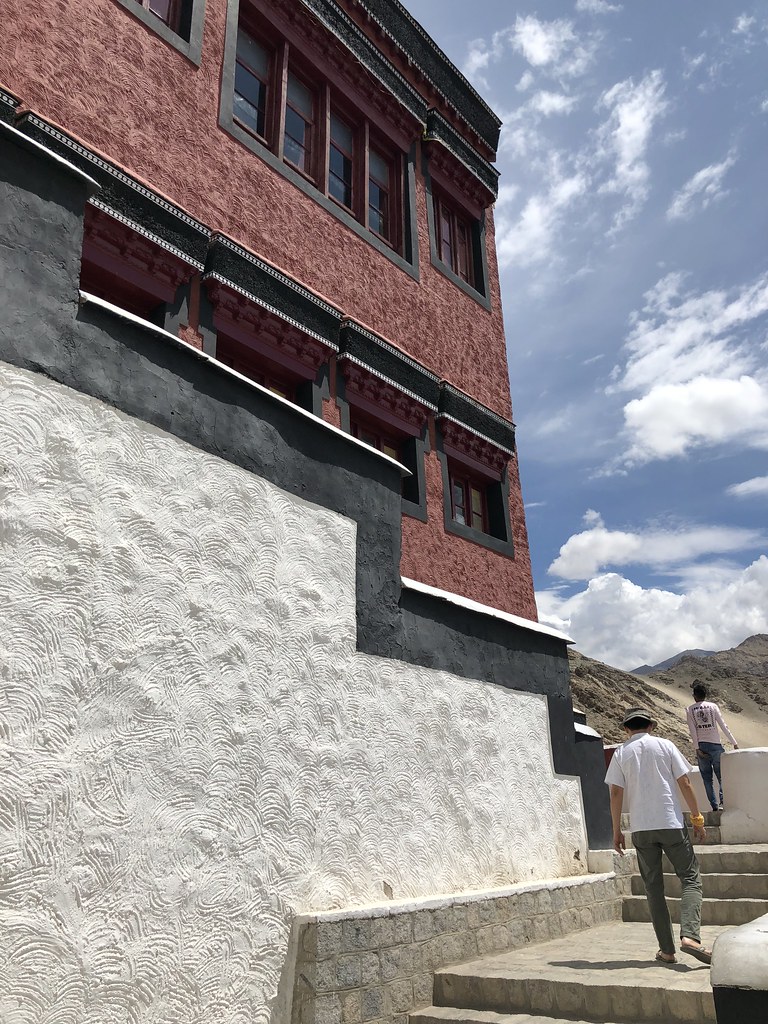 |
| Lee Haw Chou walking up Thiksey Monastery |
Our guide for Thiksey monastery was a very detailed and highly eloquent young Ladakhi man called Gesar. He explained to us how Thiksey monastery was first built in the 16th century and how mask-dancing would be carried out at its courtyard during big festivals attended by the locals.
 |
| Gesar explaining in full details. I really enjoyed his guide. |
 |
| The courtyard |
 |
| This was the Tibetan prayer pole in the courtyard. I could not remember the name for this. photo: Serene. |
At the rooftop...
"Dar, I want to make you my subject. Stand in the doorway," commanded Serene as we climbed to the roof. And my bulging stomach became the subject yet again.
This Serene simply loved doing panoramas. And at the rooftop she executed her pano shots to their fullest...
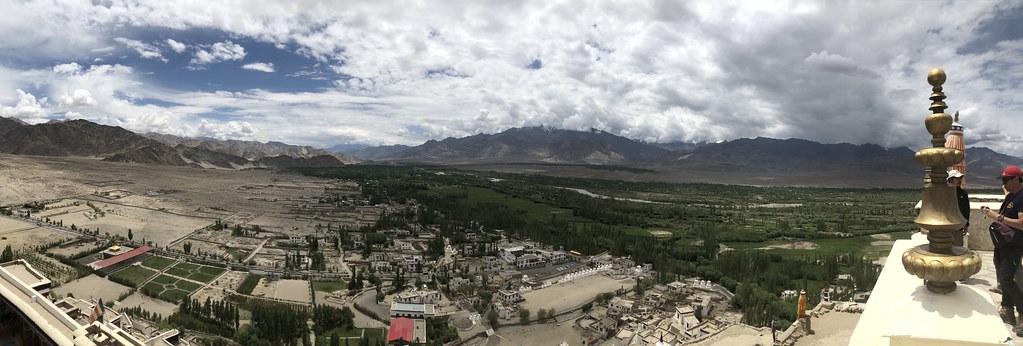 |
| From the rooftop... [Photo: Panorama by who else but Serene lah!] |
 |
| [Photo: Again another panorama by Serene again lor!] |
Gesar was not only knowledgeable but his command of English was good, though not without the usual Ladakhi accent, nothing that a little cocking of my ears to pay more attention couldn’t overcome. He could even quote Einstein's theory of relativity.
Chamber to chamber he brought us, showing us the meanings of the wall paintings.
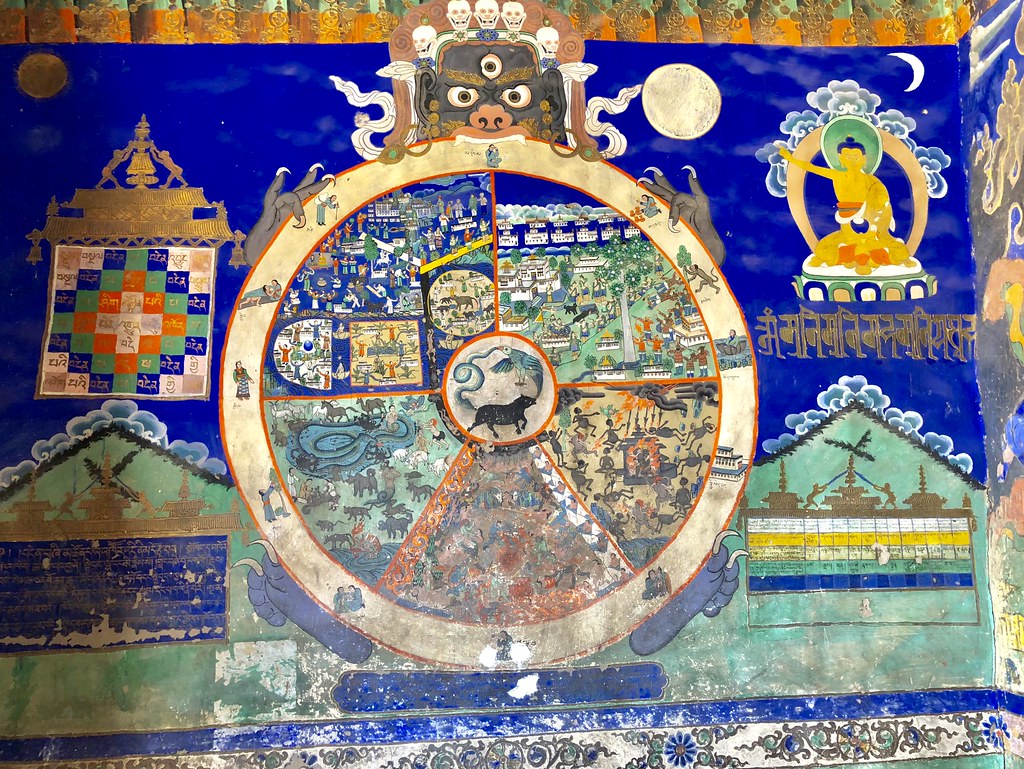 |
| Sadly the paintings at the bottom were already starting to peel... years of constant touching and rubbing have damaged them. |
One of the most important painting was that one just outside the main chapel, that of Samsara the cycle of rebirth 六道轮回... or in this illustration, it was the ancient Tibetan version of the five realms instead of the more modern six realms.
It illustrated the realm of humans (人道), Demi-gods (阿修罗道), gods (天人道), animal realm (畜牲道), hungry ghost realm (饿鬼道) and hell (地狱). Early Theravada Buddhism designated five realms instead of six, combining the gods and demi-god (asura) realms into one realm, precisely as illustrated in the ancient drawing above. It was later during the era of Chinese Buddhism that the demi-god (asura) realm was separated as the sixth realm by itself.
Gesar continued to explain that in human life we are constantly suffering - 生老病死 (birth, ageing, sickness and death), and the most important reasons why human beings continue to experience suffering was denoted by the picture of the pig, the bird and the snake right in the middle of the circle- 贪憎痴 (Greed as annotated by the bird meaning attachment, Hatred as indicated by the snake, and ignorant as denoted by the pig). Greed, hatred and ignorant perpetuated the sufferings in all sentient beings.
The Four Noble Truth- 苦集灭道 - 苦 the existence of suffering; 集 the origin of suffering, which in additional to the obvious 生老病死 (birth, ageing ,sickness, and death) also originates from 贪憎痴慢疑 (greed, hatred, ignorant, arrogance 傲慢, and suspicion); 灭 cessation of suffering by practicing; and 道 the path to enlightenment, the latter was illustrated by a picture of Buddha on the upper right hand corner of the picture pointing to the white moon representing enlightenment. The path to enlightenment is the Eightfold Path 八正道.
I really loved this picture. It was a picture that was ubiquitous in every Tibetan monastery and temple and it summarized the very essence of Buddhism. A very easy way for laypersons, especially during those days when illiteracy was common.
The first Dukang
Once we stepped into the Dukang of Thiksey Monastery, we found ourselves once again totally immersed in the aura of a Tibetan temple, the yak-oil lamps, the yellow hats folded on the table, the deep maroon cushions laid on the floor and the platform for the monks to sit and pray, the drums, the wall paintings... everything literally transformed us right back into Tibet.
 |
| This Serene really good. Even the interior of the Dukang she also managed to panorama shot it. |
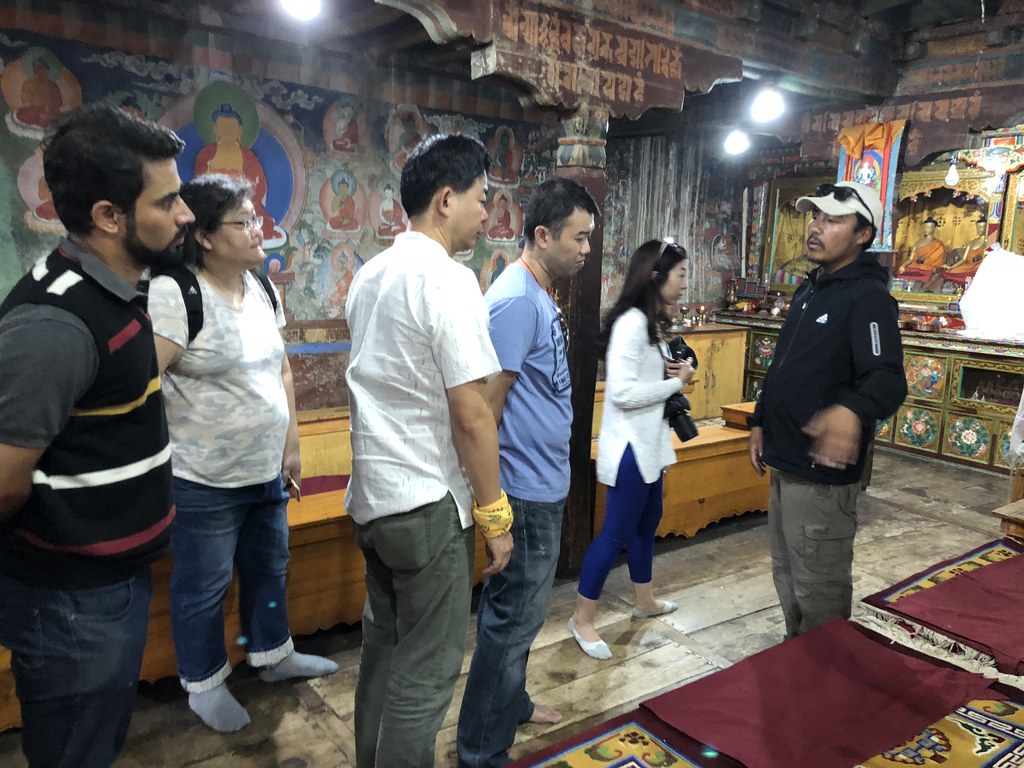 | |
| Gesar explaining that the lower cushions were for the junior monks while the higher platformed cushions were reserved for the senior monks. |
The first Dukang (assembly hall) where all the monks senior and junior congregate for the prayer sessions had an inner chamber housing the statues of Sakyamuni Buddha, Tsongkhapa, the founder of the yellow hat Gelugpa (黄帽派), Guru Padmasambhava, the Indian Buddhist Master who brought Buddhism into Tibet in the 8th century and formed the Nyingmapa sect of Buddhism embodied in the currently still existing Samye monastery in Tibet.
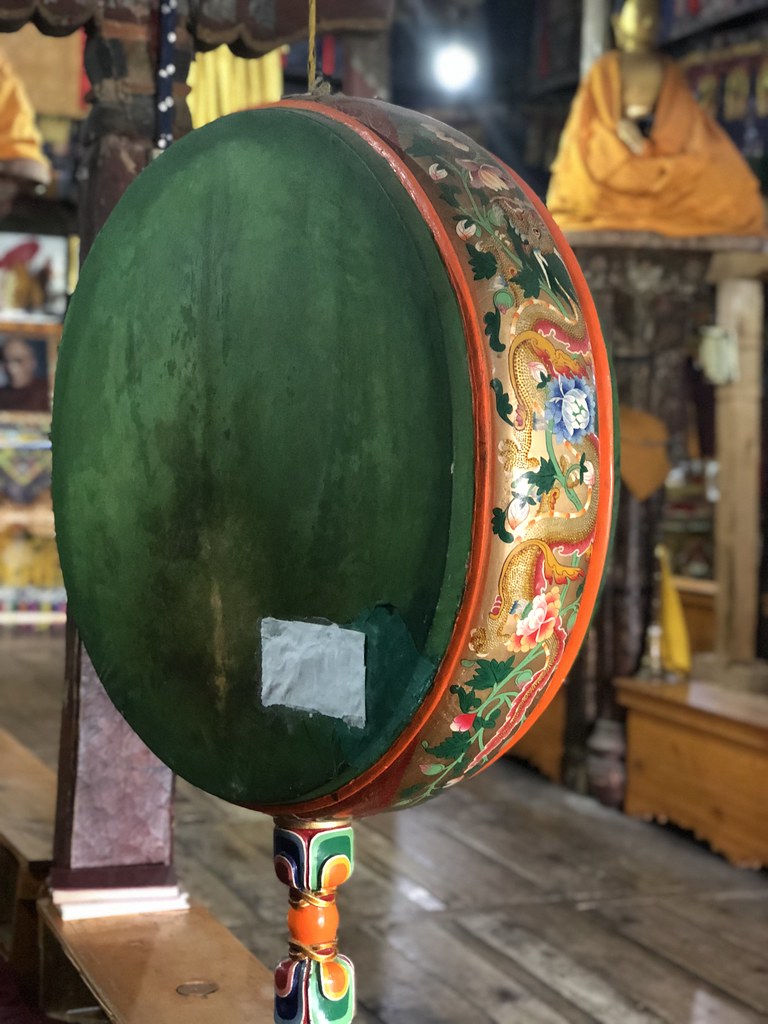 |
| [Photo: Serene] |
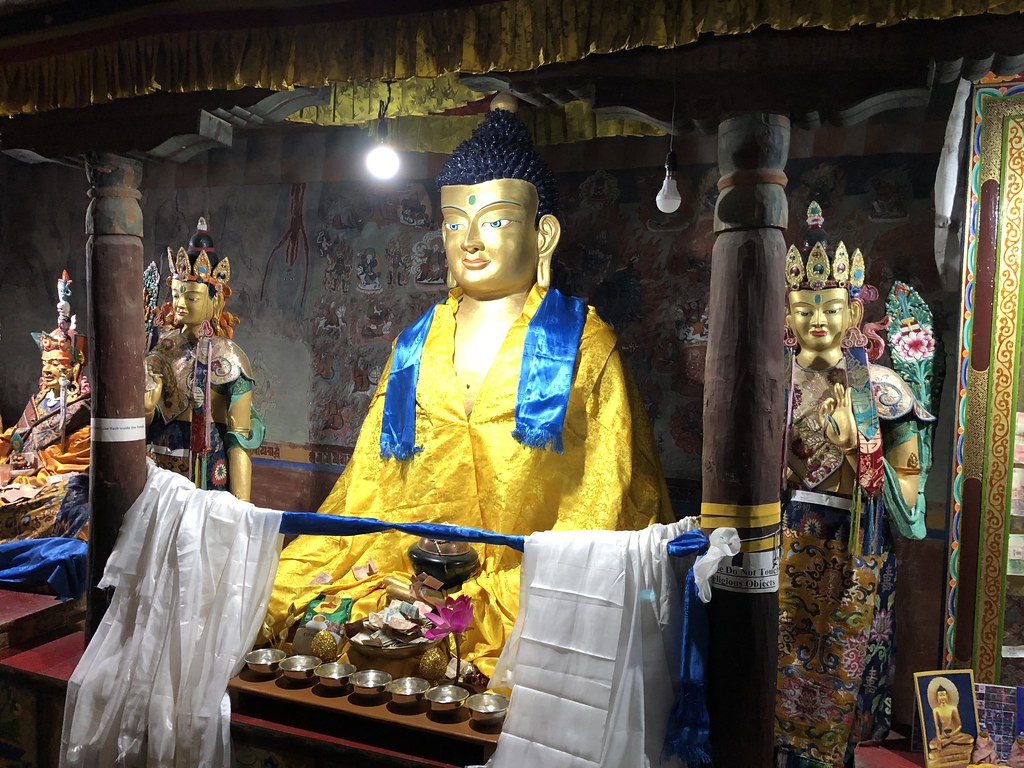 |
| Sakyamuni Buddha |
 |
| Tsongkhapa |
 |
| Guru Padmasambhava |
Such a Tibetan feel to the monastery...
Thiksey Monastery is such a classic Tibetan style temple. Its interior and exterior was precisely the way the Tibetan temples appeared in Tibet, all the way East from Jokhang Monastery (大昭寺) and 小昭寺 in Lhasa, through Sera Monastery 色拉寺 in Shigatse, Palkor Chorten 白居寺 in Gyantse and even right to the West in Tinggri, in Tibet. And like many Tibetan temples, the statues of Sakyamuni Buddha and Tsongkhapa were centrepieces. And the statue of the revered Guru Padmasambhava was also respectfully presented.
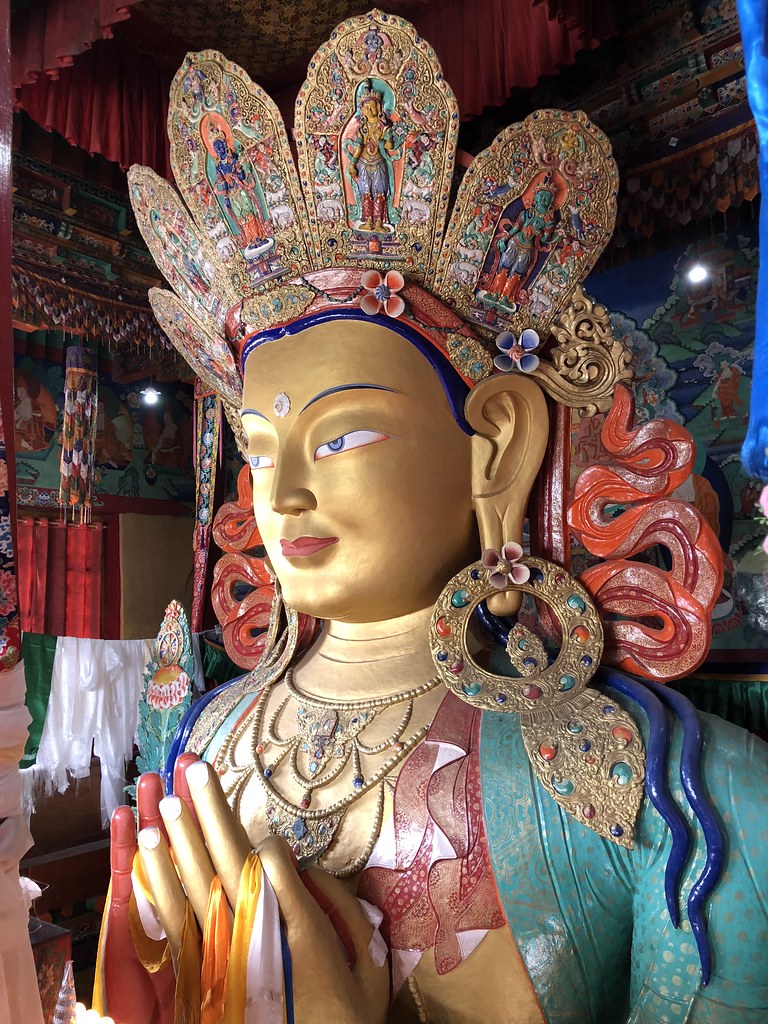 |
| Maitreya Buddha, known in Chinese as 弥勒佛 (未来佛). |
The next Tsokang on the right houses a huge statue of Maitreya Buddha. Gesar explained that the current Sakyamuni Buddha’s era was known to last 5000 years, it would reach its peak, and then after a decline until Buddhism as a way of life would cease to exist for sentient beings and the world would plunge into a dark age. It was, as he continued, believed that we were half way through this 5000 year cycle. After the dark ages, that would be when Maitreya Buddha would rise and start to bring His teachings and lead human beings to another new era of Buddhism, and yet another cycle.
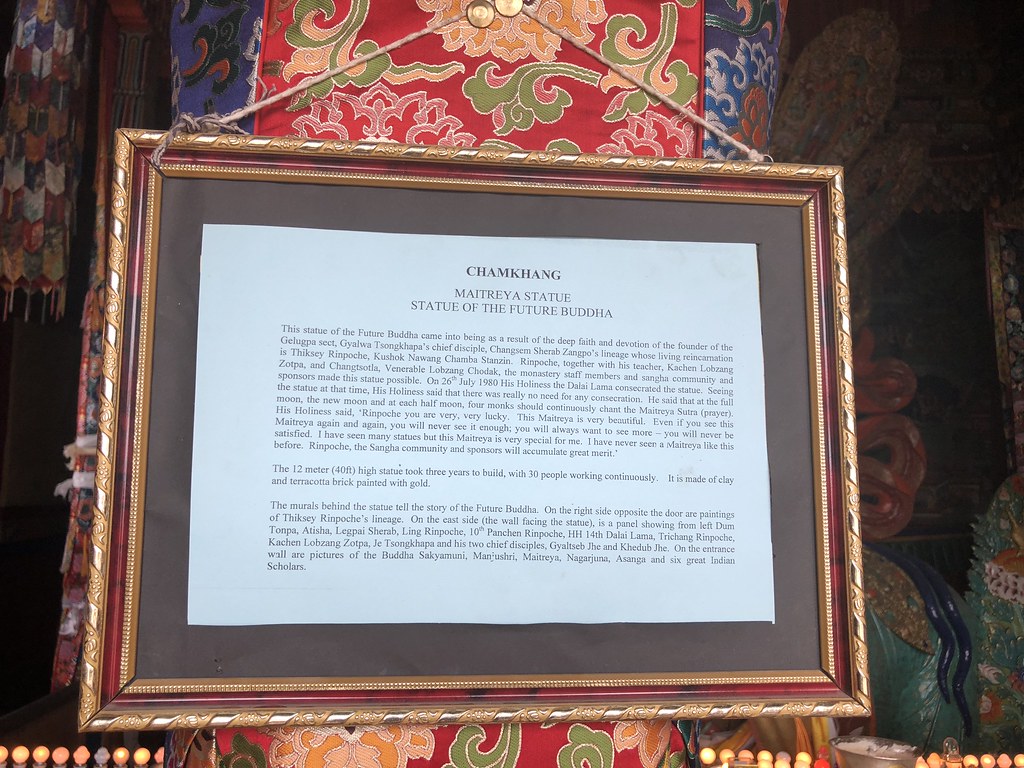 |
| Read what the Dalai Lama said about this Maitreya Buddha.. why it was so perfect that it needed no consecration/ |
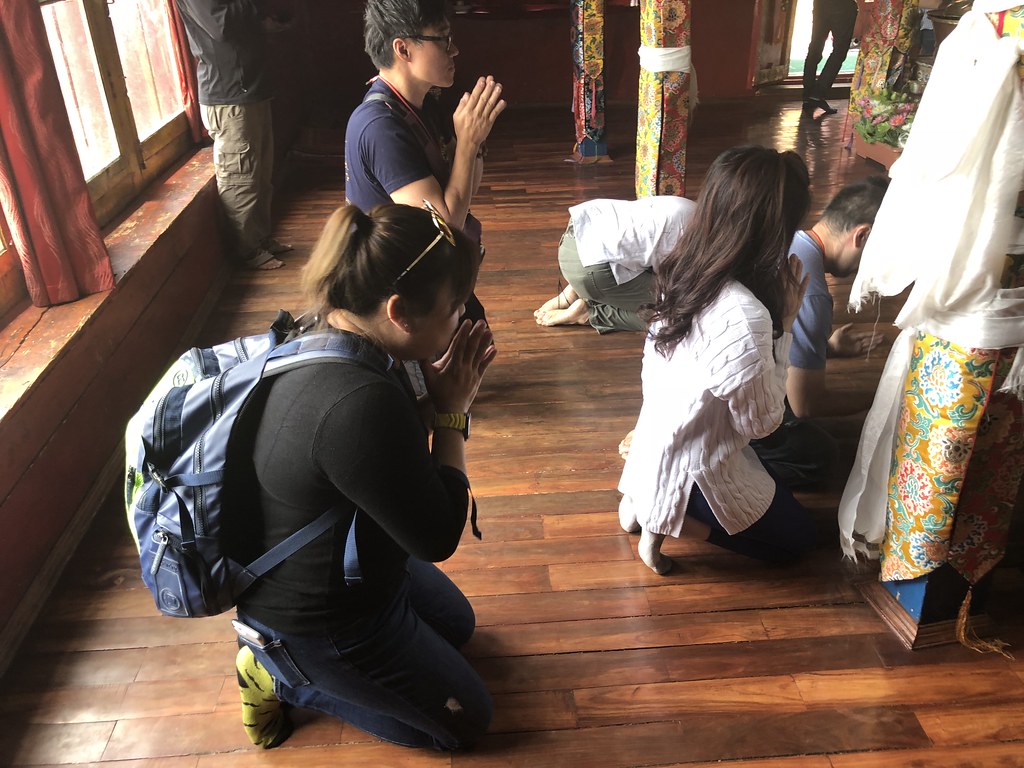 |
| Photo: Serene |
Gesar further explained: "Many of the locals come to pray here to the Maitreya Buddha, and wish that in 2500 years' time they will have the fortune of being reincarnated at the time when the future Buddha will be giving his teachings... and be personally present during his teaching to be enlightened and be blessed by Maitreya Buddha at that time."
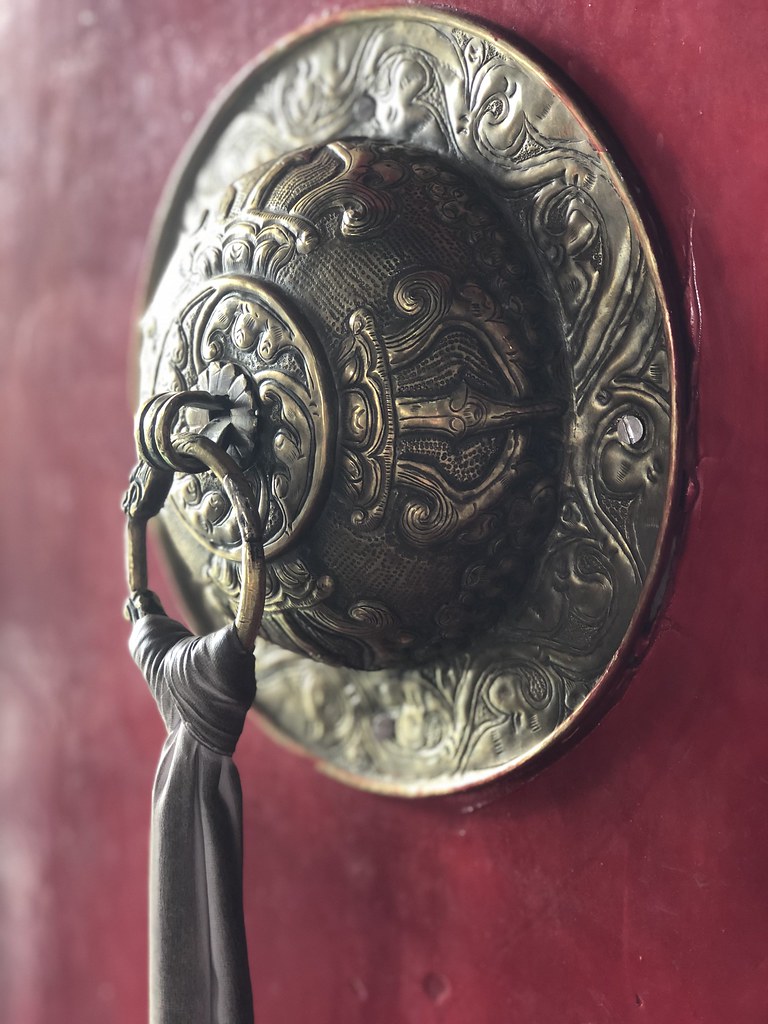 |
| Photo: Serene |
 |
| Photo: Serene |
We were further surprised when one monk invited Laura up another floor, which subsequently we all followed, to arrive at the library one storey higher. A tiny little enclave where handwritten scriptures on hand-made paper were stored in cloth-pouches covered by wooden covers. The traditional and original way of scripture storage in many Tibetan monasteries.
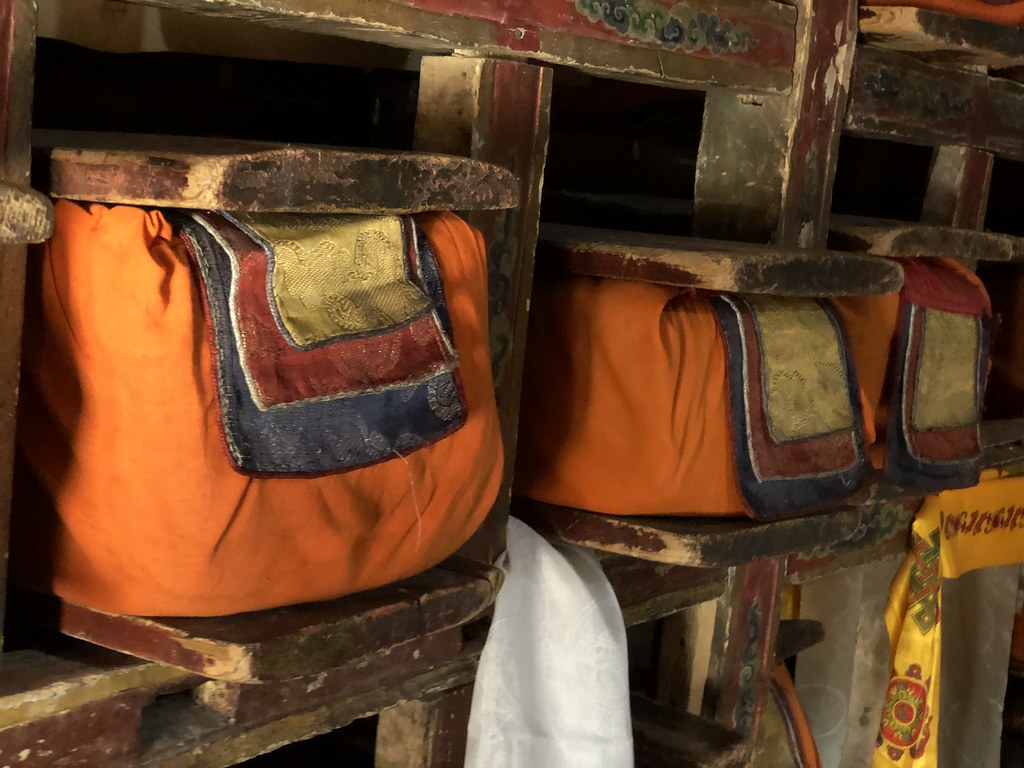

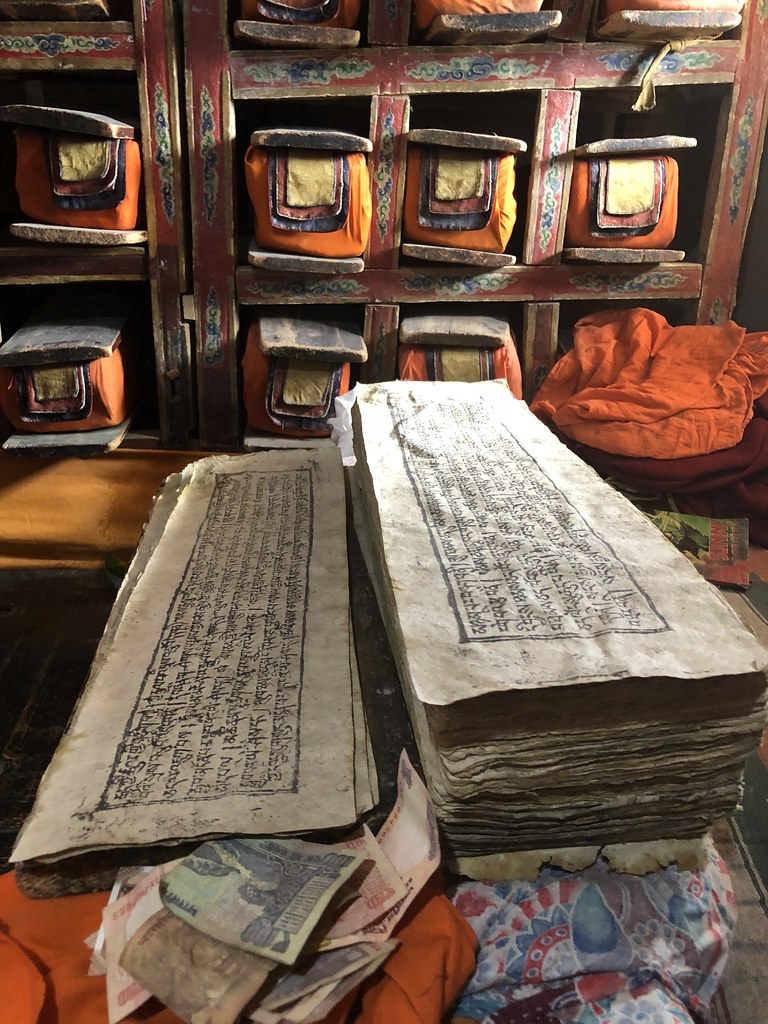 |
| This photo: Serene lor. |
Gesar said: "These are ancient scriptures written by hand on hand-made papers. They are the original, not those machine-printed ones."And he was correct. The uneven surfaces of the old hand-made pulp-paper was apparent.
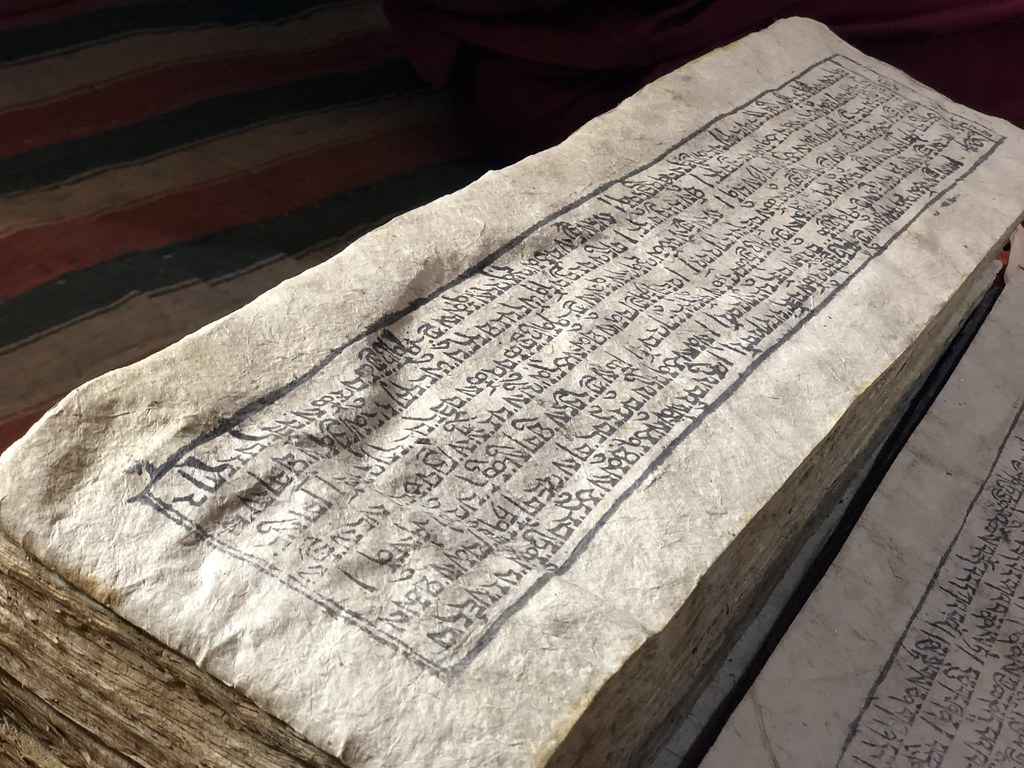 |
| This was MY photo. |
Finally we climbed up to the rooftop of Thiksey monastery to enjoy a panoramic view of the whole of Leh and also the small hamlet of buildings where the BRO soldiers were housed. These BRO (Border Road Organisation) soldiers were the important people who worked hard to keep the snow-logged roads open by constantly clearing the frozen ice from the roads for that six cold wintry months so that supplies and vehicles could still pass all the way to the northernmost village in the State of Jammu and Kashmir.
The small little villages around Thiksey monastery from way above at the rooftop.
A look at Thiksey monastery from way below.
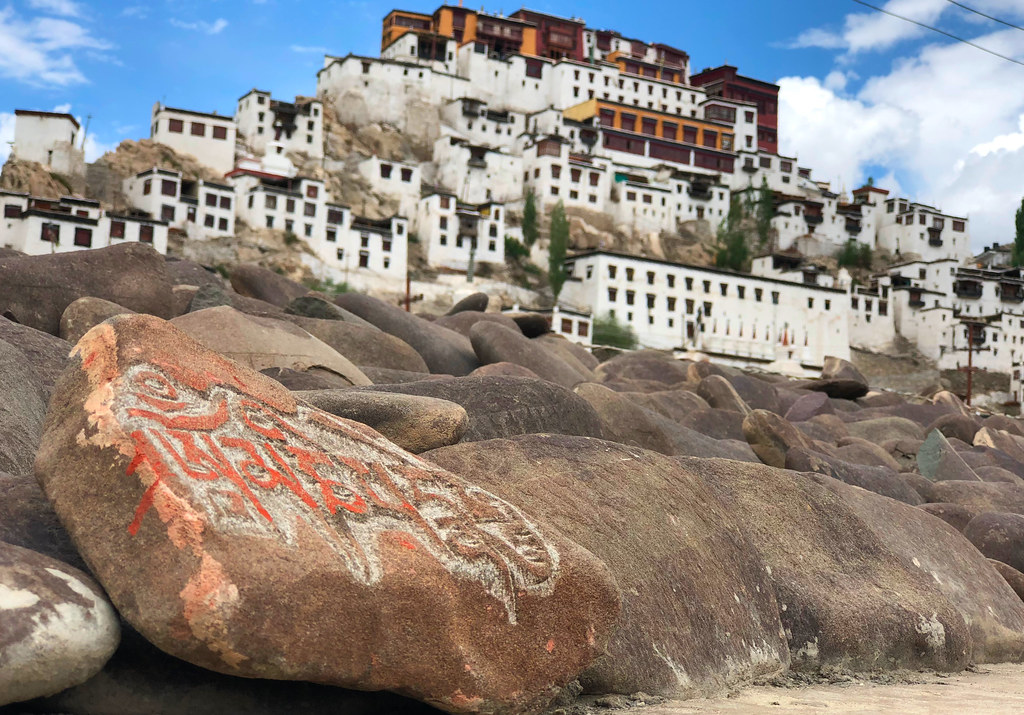 |
| Serene's shot of the mani stone with Thiksey Monastery in the background. |
Some introspection...
This reminder brought back to surface, a renewal of my own thoughts on Greed and Hatred. It was so difficult, I found, to define what is greed. Attachment is greed. Wanting to earn more money is greed. Wanting to be financially independent, but in the process profitting from others, would technically be considered greed too. But we are secular beings, living in this modern world.
"How would you define greed?" I asked Terence in the jeep, in the midst of my thoughts. "When my children were young and they only needed $10, I worked this much. But now they are older and they need more for their studies and activities, I will need to earn more money. And as they grow older and as I grow older, I start to plan for retirement, meaning I will need even more money. Isn't that natural? Or is that greed?"
Terence's answer was straight forward: "We are still secular beings. We cannot run away from wanting more. As long as we stick to the Precepts and the Noble Truths and live our lives as close to them as possible, I think that's all we can do." Very truthful answer.
Later back in Stok Palace, Haw Chou answered me: "You just have to know how much is enough. Sometimes after you have earned, say this amount, in a month. You know that will take care of the expenses already, then you can relax liao. But what is important is to have Compassion when you see patients."
静莉 added: "君子爱财,取之有道。"These are all words of wisdom. Words of truth. Still, deep within myself, I struggle with the definition of Greed. I need to rid myself of Greed. But I need to still survive in the fast-paced, rapidly-changing, highly-demanding modern society and in order to keep the family going, I need to keep thinking of ways to accumulate wealth, through honest means, of course. The more I thought, the harder it was for me to come to a conclusion. I was not free from Greed, not free from Hatred. And I still had a long long way and many many life times to learn.
Shey Palace
Shey palace was another palace owned by the Namgyal Royal Family. It was previously in ruins until it was restored as an archaeological site and now it longer housed the royal family but a Buddhist temple. It was part of the Ladakhi Namgyal heritage that should not be missed, and we headed towards Shey Palace right after Thiksey Monastery, with Gesar our local guide following us.
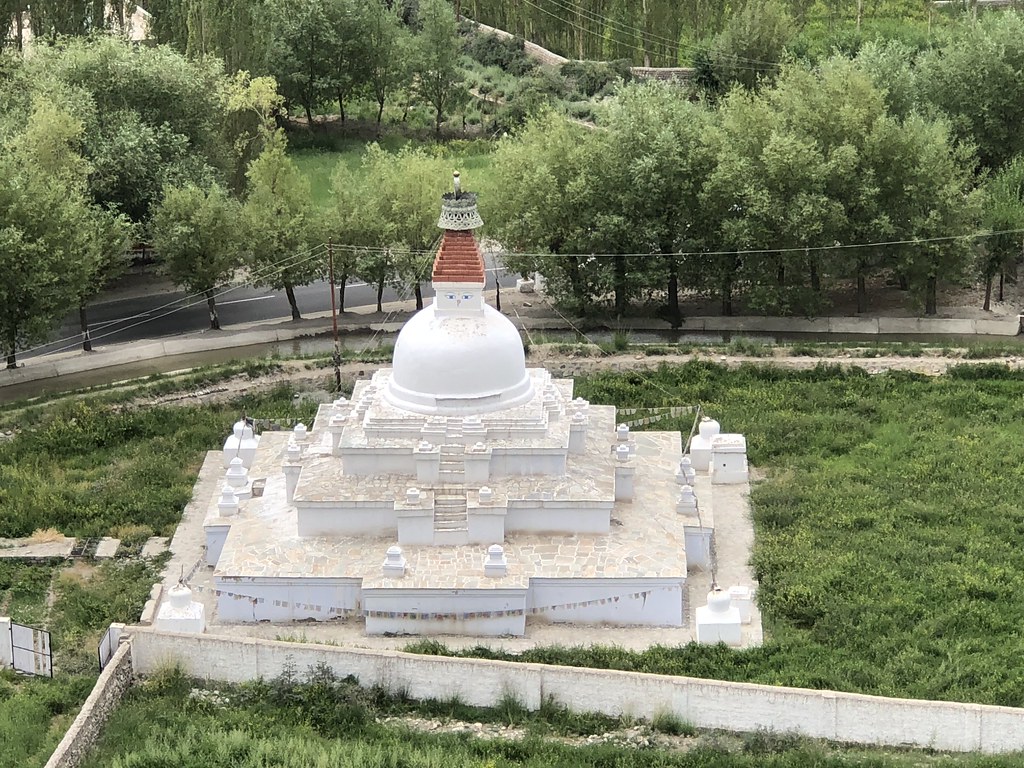 |
| Photo: Serene |
What was Serene shooting?
I found this quaint little palace-turned temple really charming. We simply quietly explored this place, with Gesar gentling giving us a running commentary as we walked through the nooks and crannies of the restored palace.
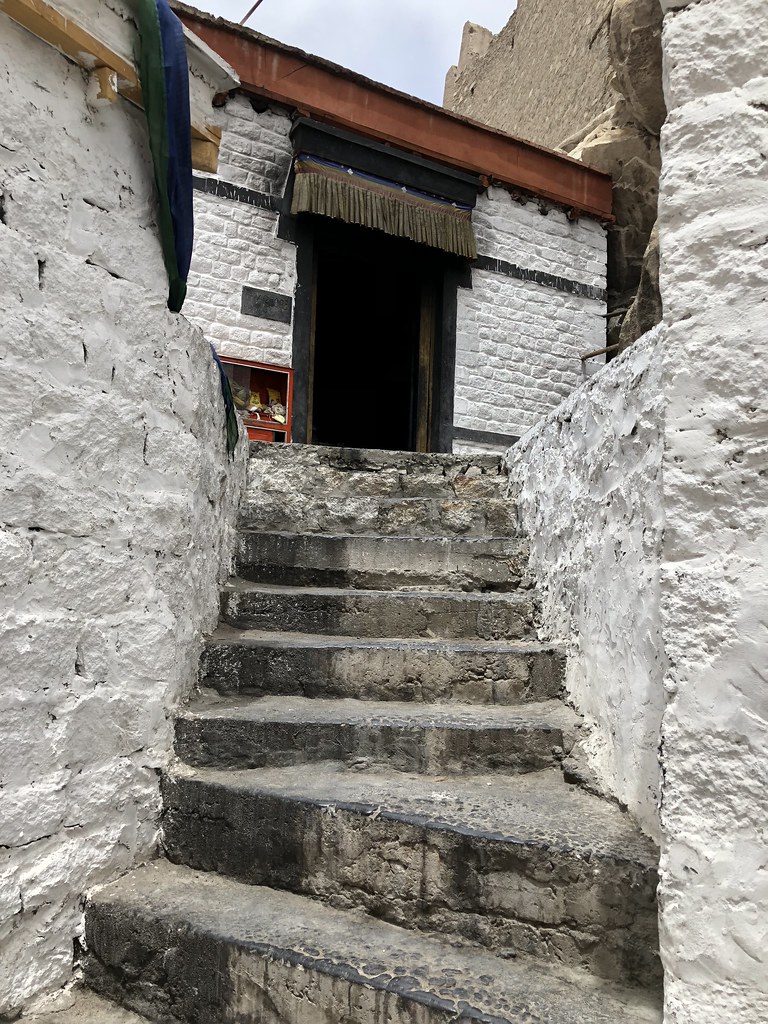 |
| Walking up the small stairway into the main Dukang. |
Gesar: "Devotees would always circumambulate clockwise, the statue of Lord Sakyamuni Buddha three times."
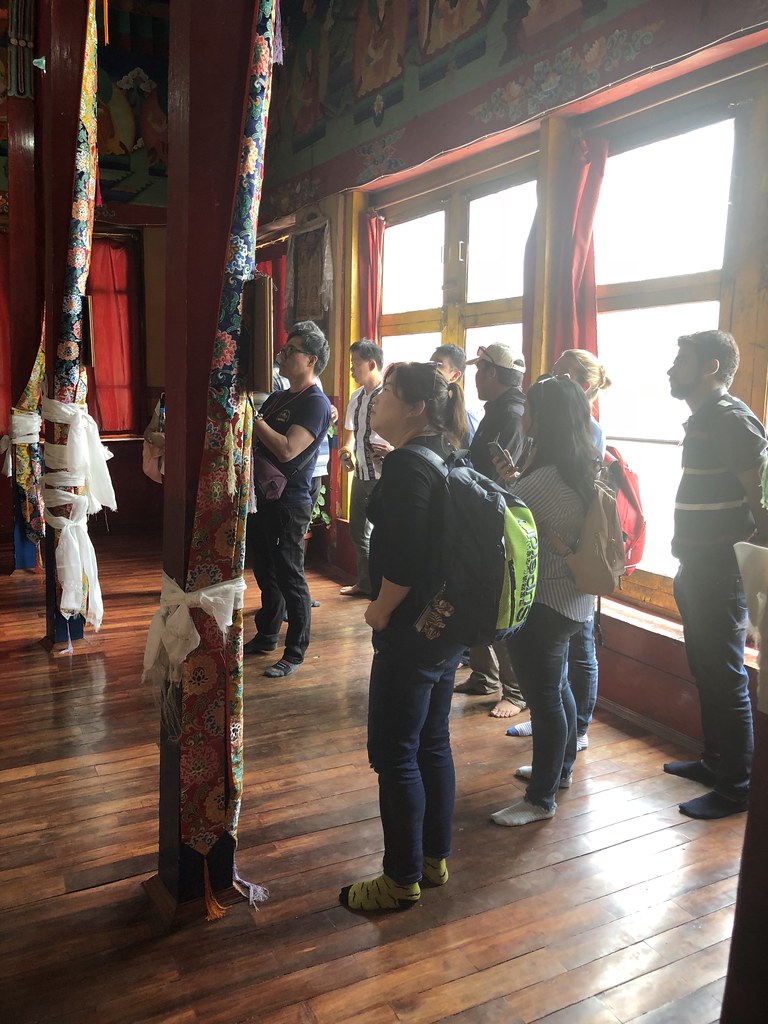 |
| Photo: Serene |
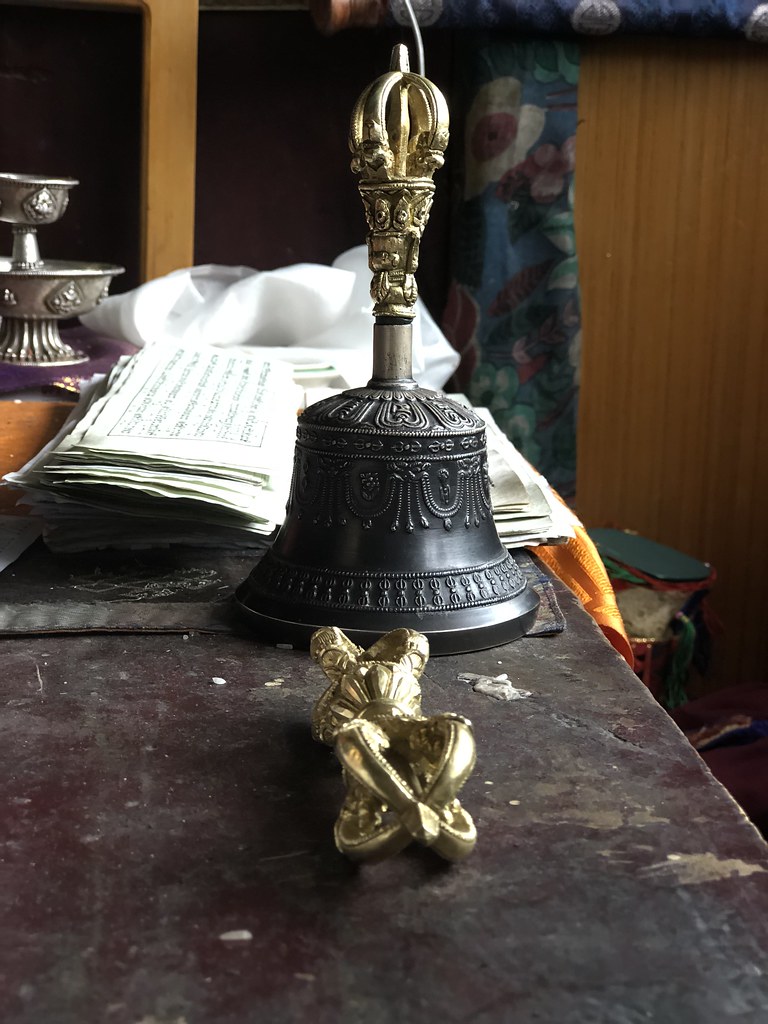 |
| Photo: Serene |
Shanti Stupa
Shanti Stupa was another delightful destination. It was quietly magnificent. And I noticed that among all the visitors were many devotees here to pray and to circumabulate the stupa.
Lee Haw Chou and Chin Lee were the first two to go clockwise around the stupa, and somehow by the time I started they were half way through already.
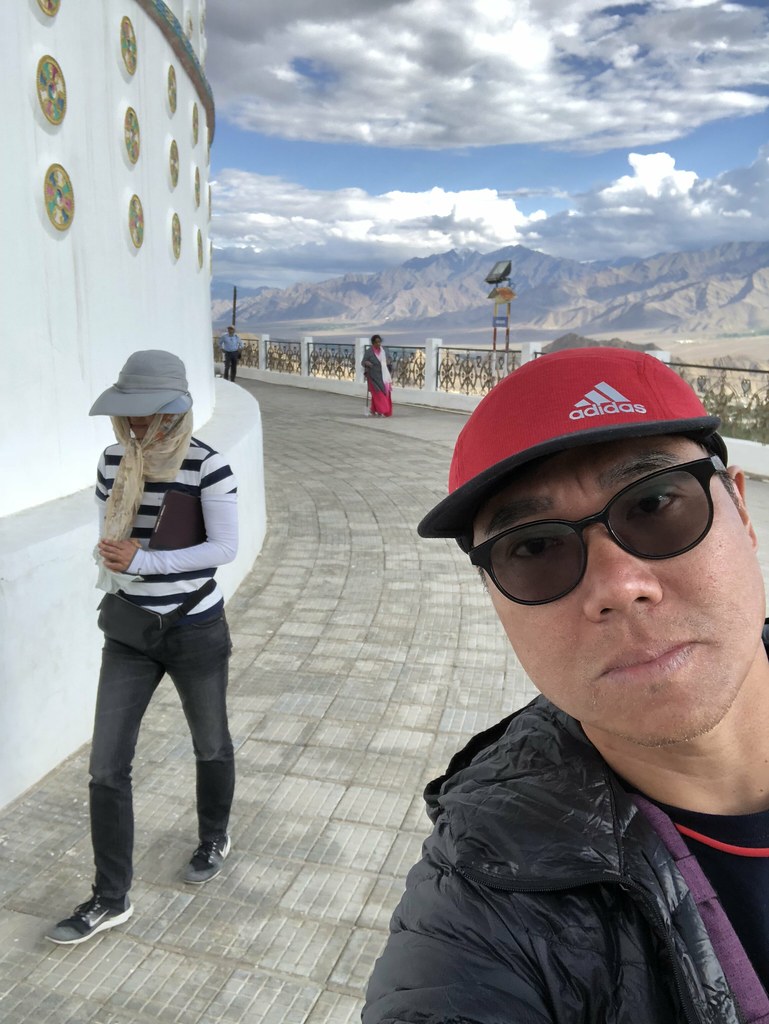 |
| This Chin Lee and Haw Chou both circumabulated the Shanti Stupa three times, each in his/her quiet mind. |
It was peaceful, as its name implied. And quiet, and serene. I could imagine myself sitting there and meditating and feeling the presence of the stupa in all the calmness of the environment. I really enjoyed this stupa.
Leh Bazaar
Leh Bazaar is really the signature of Leh. Although some may say it is getting touristy but I could imagine how it was during its heydays during the medieval period when the Silk Road was in full operation.
I was delighted to see actual Ladakhi ladies selling their vegetables and local primary products by laying them on the floor just outside the shops. I wasn't sure who their customers would be, but definitely not the tourists. Imagine, if I were to live in Leh for a long period of time and have to cook my own meals, I certainly would be here to pick up some fresh vegetables,
I looked around... the shop signs were all in English. Hmm, that was understandable.. this part was of course under the British rules for a long time. But I was kind of expecting some local writings. I caught myself as I was going through this train of thoughts - this was Ladakh. Ladakhi was a spoken language and it had no writings. The prayers were written in Tibetan, but I actually would expect no writing for the commoners here in Leh who were Ladakhis. Of course, they could put up sign boards in Hindi, but then again, it was Ladakhis who were living and working here. So it made little sense too. Thus explained why all the signboards were in English.
Lay Hong and Jeanetter had already found the two shops for us to buy Pashmina shawls and had bargained the prices down for us already. We just needed to go and grab them. So good of these two ladies!
Chin Lee and I stumbled upon these beautiful Tibetan singing bowl and we got them at S$10 a piece. Quite a good price.
BON APPETIT
This little outdoor restaurant catered to mainly tourists, as apparent from the many numbers of ang Mohs in it. But I must say the food was really good and we enjoyed the ambience of it.
To go back to the home summary page, click: "Nubra Valley Medical Volunteer work - a trip of discoveries"

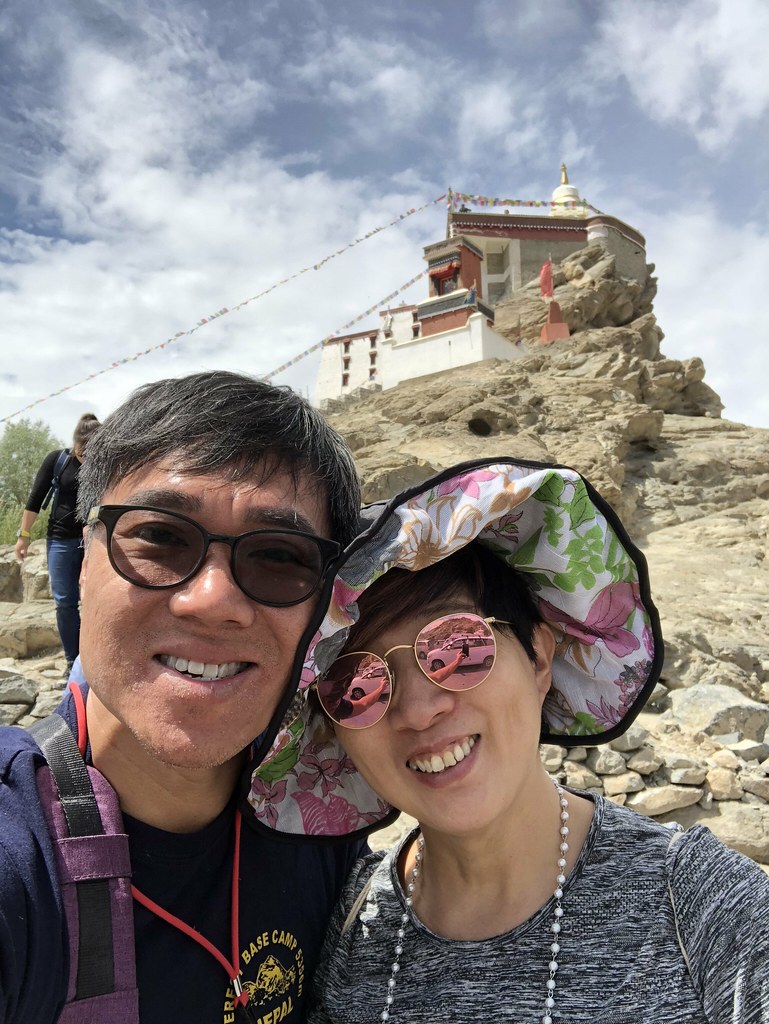

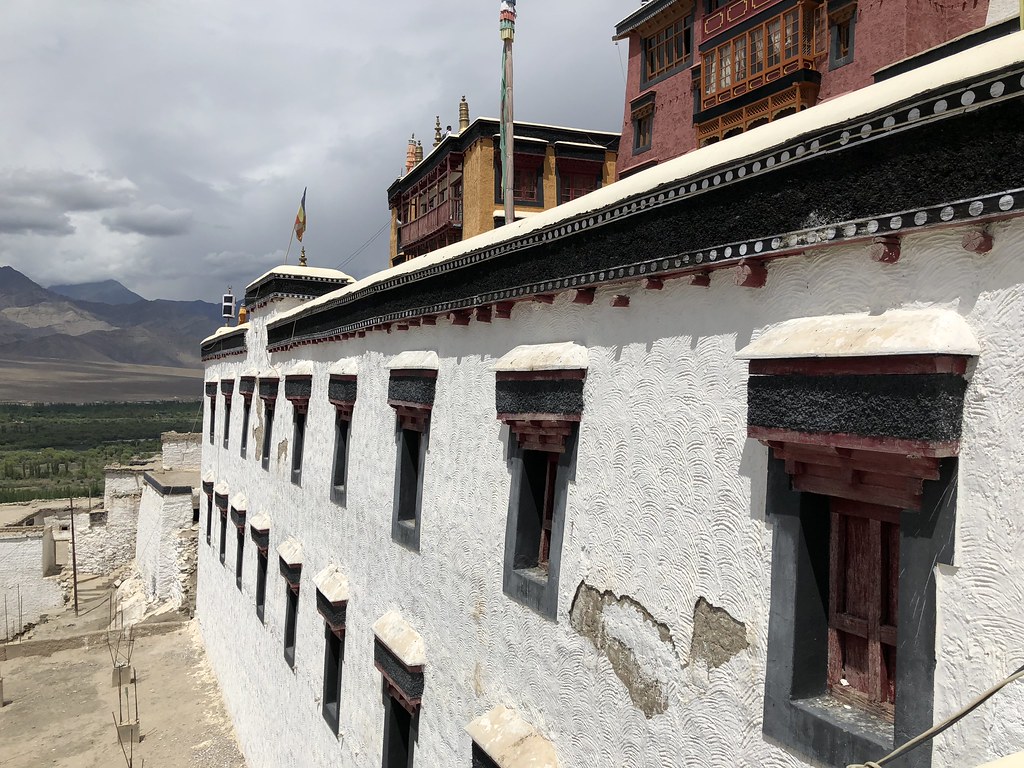
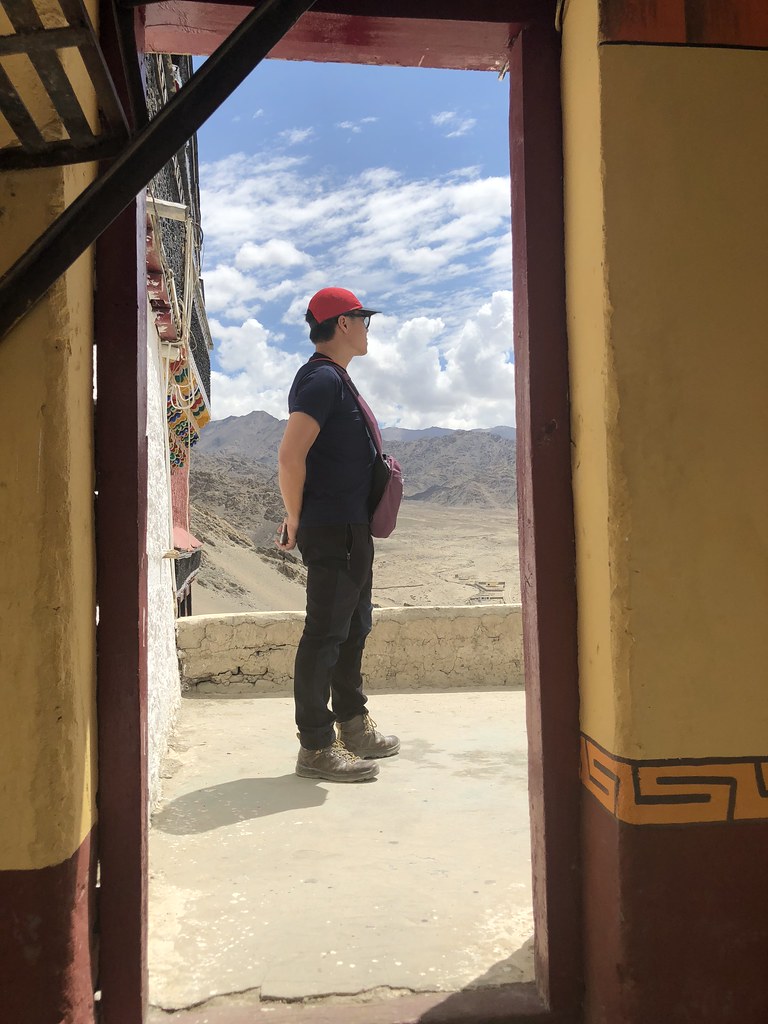
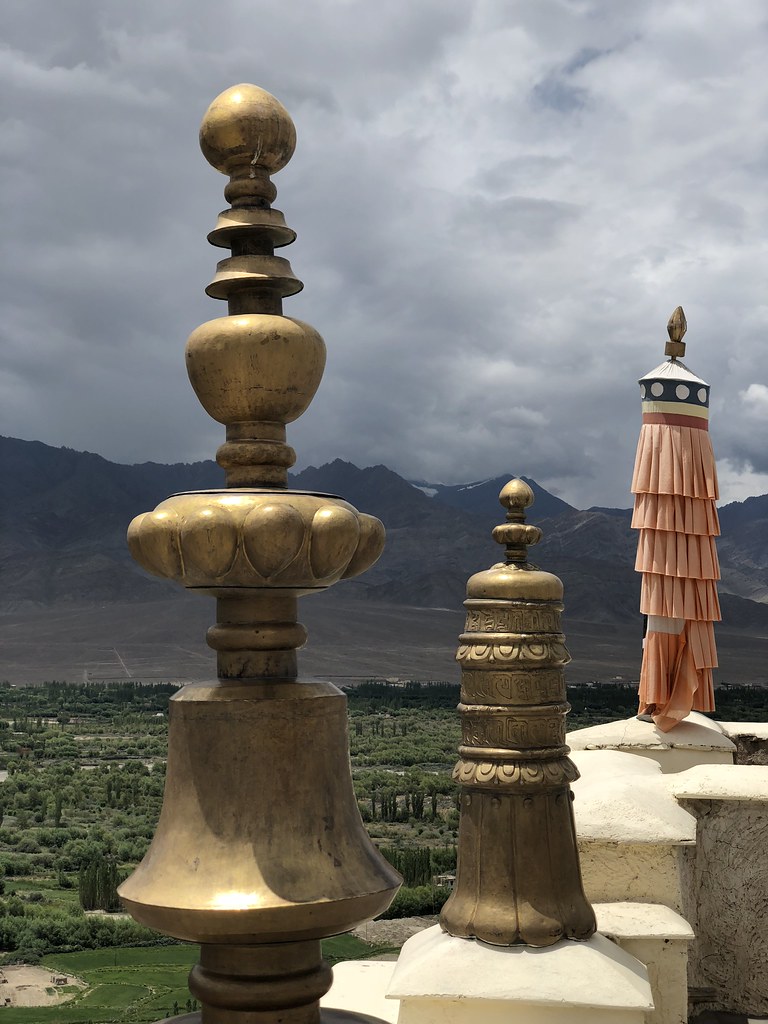
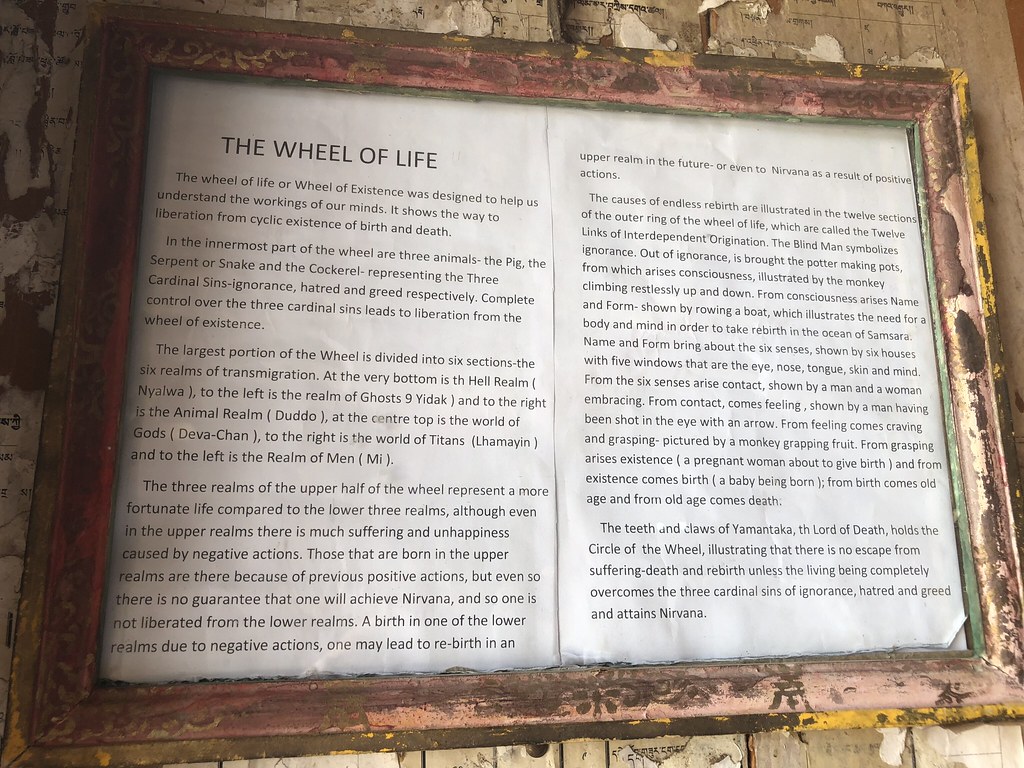
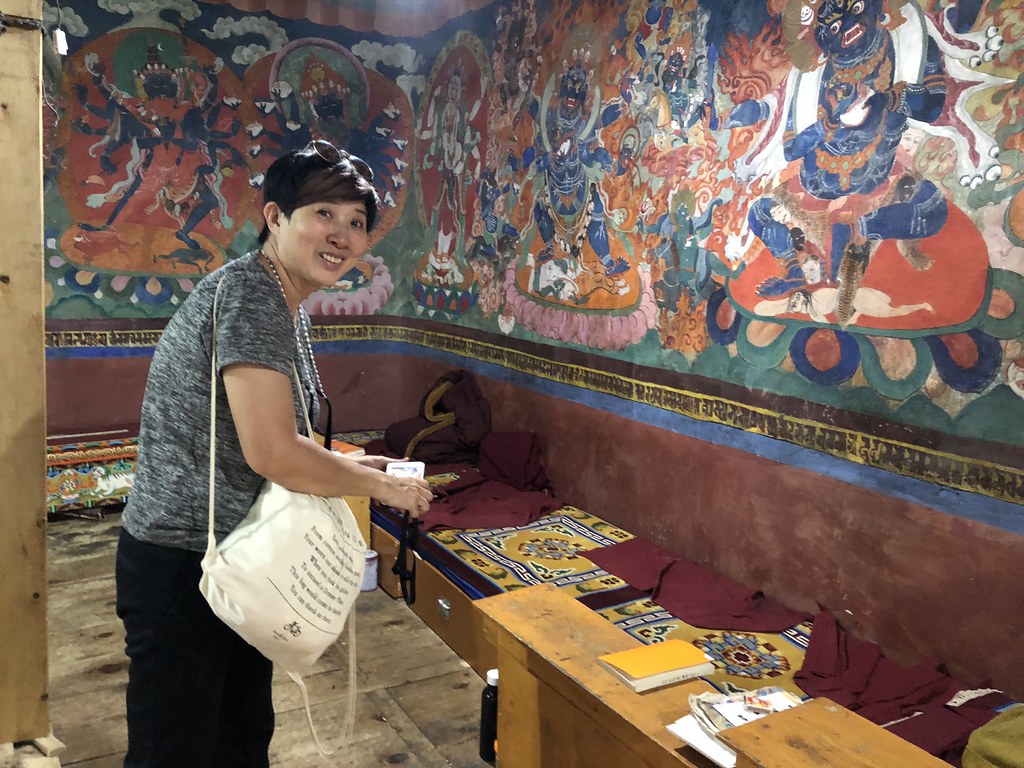
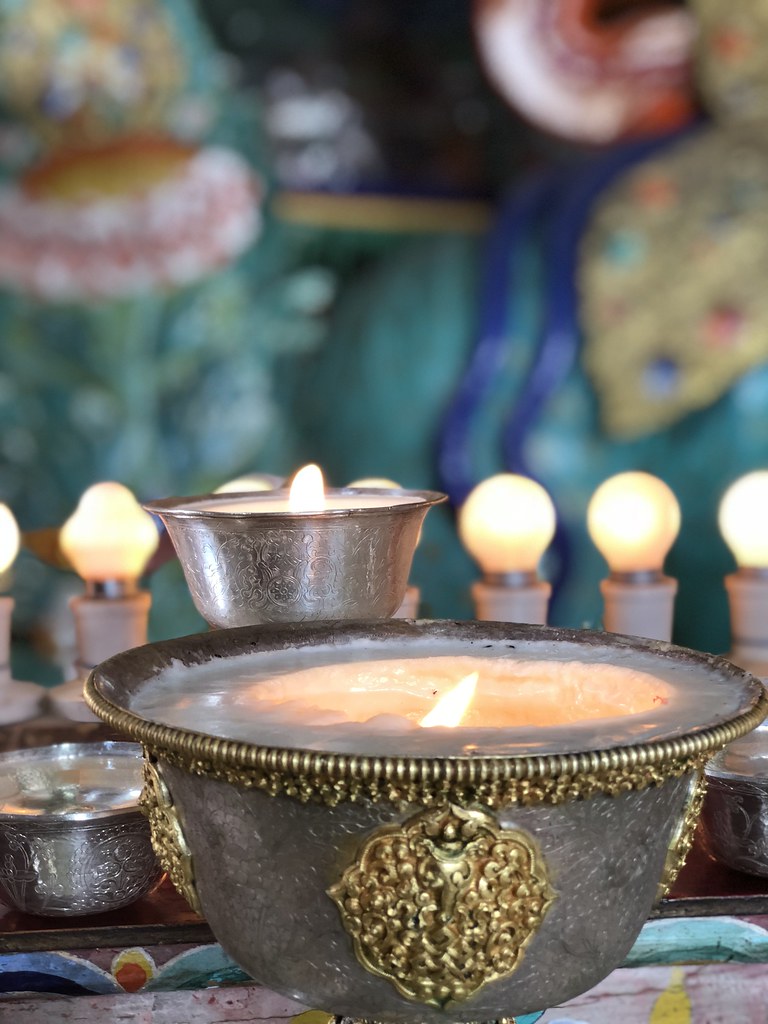



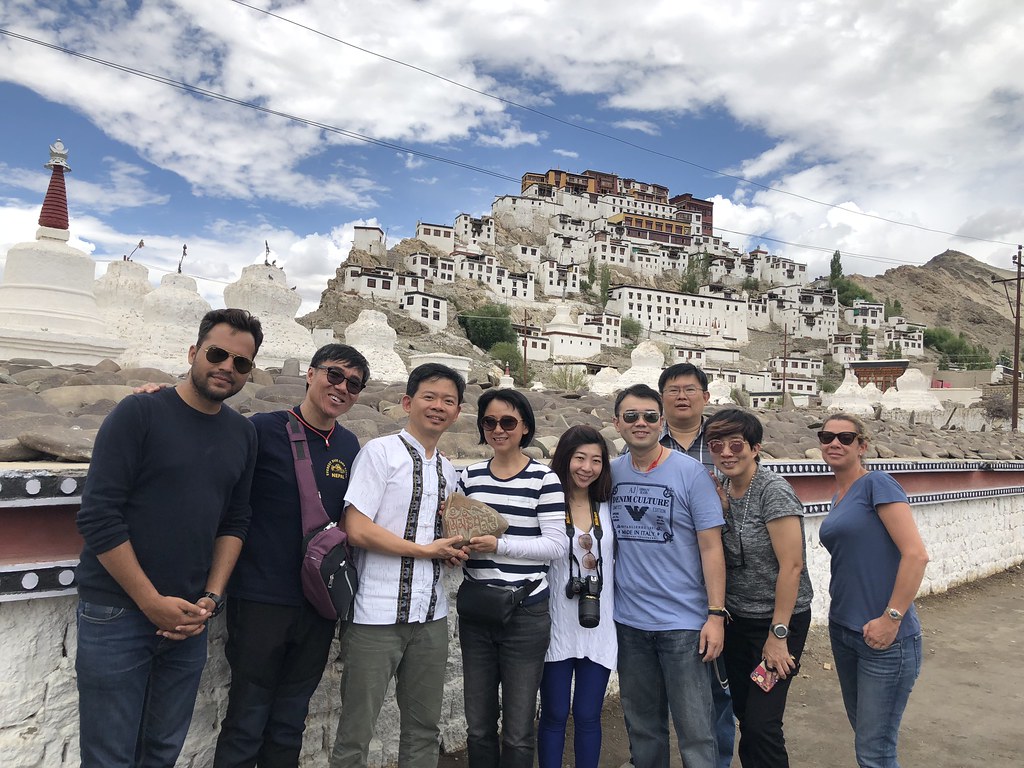
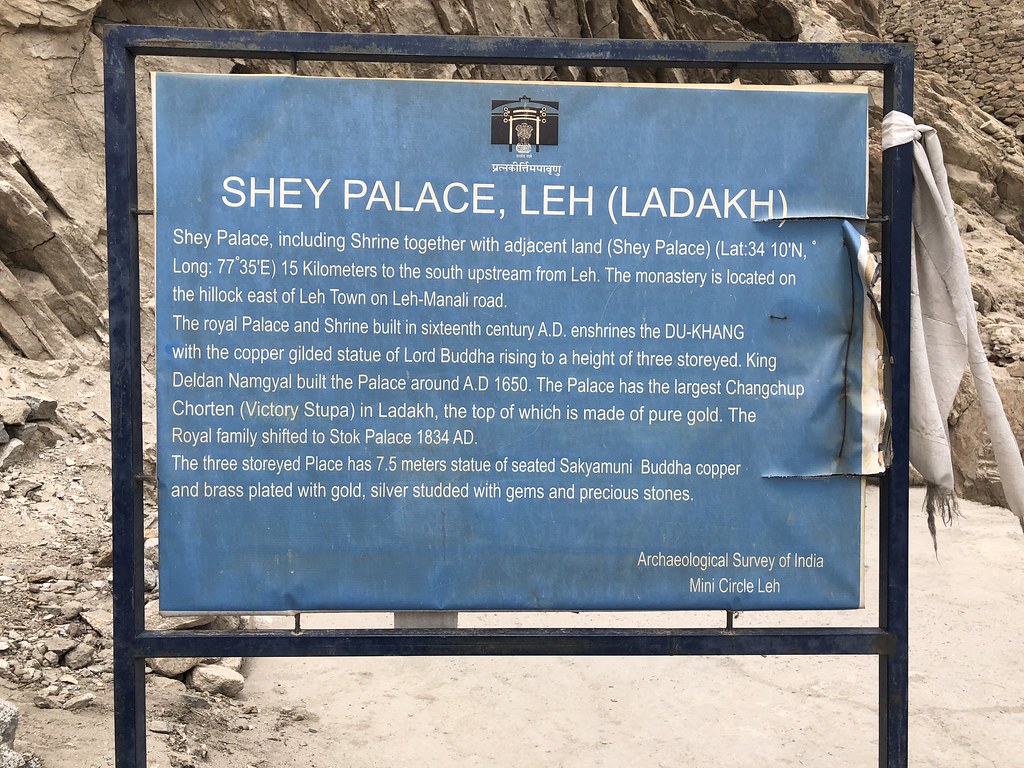
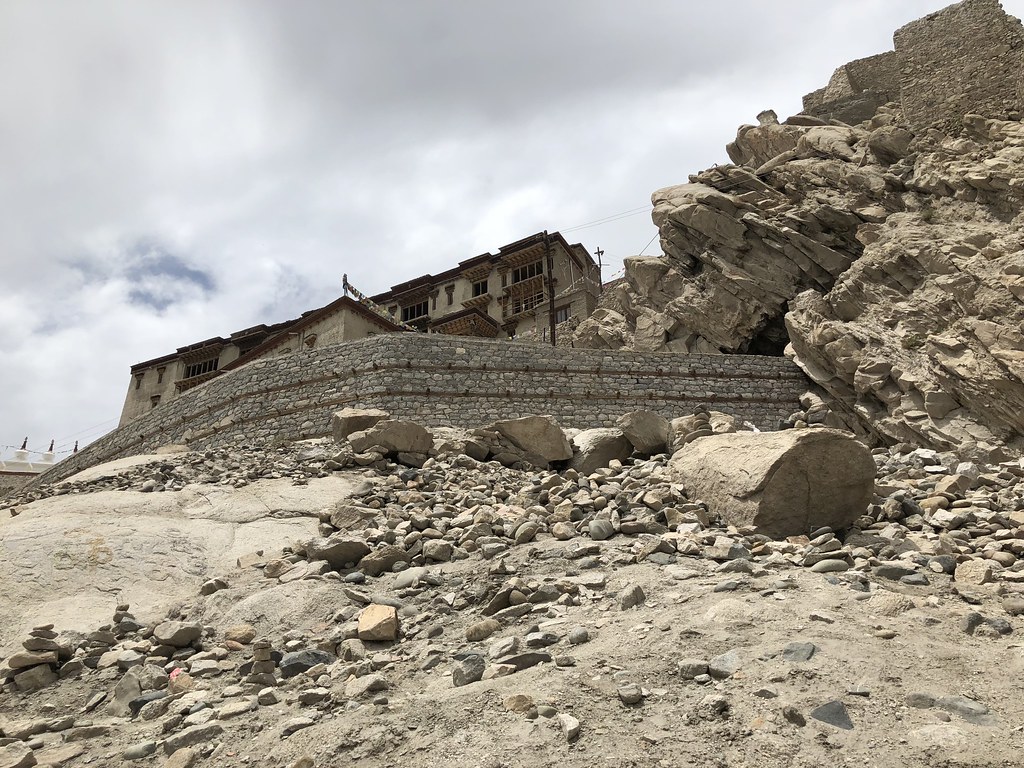
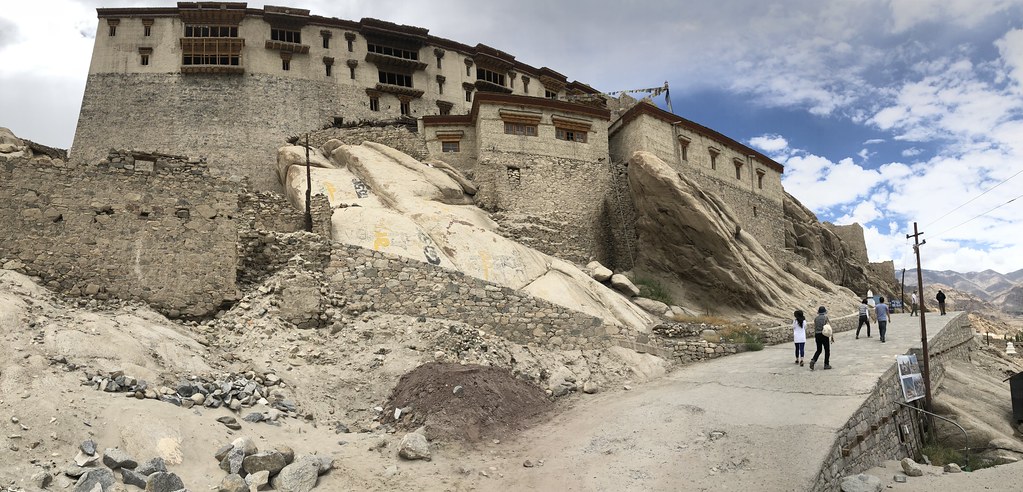
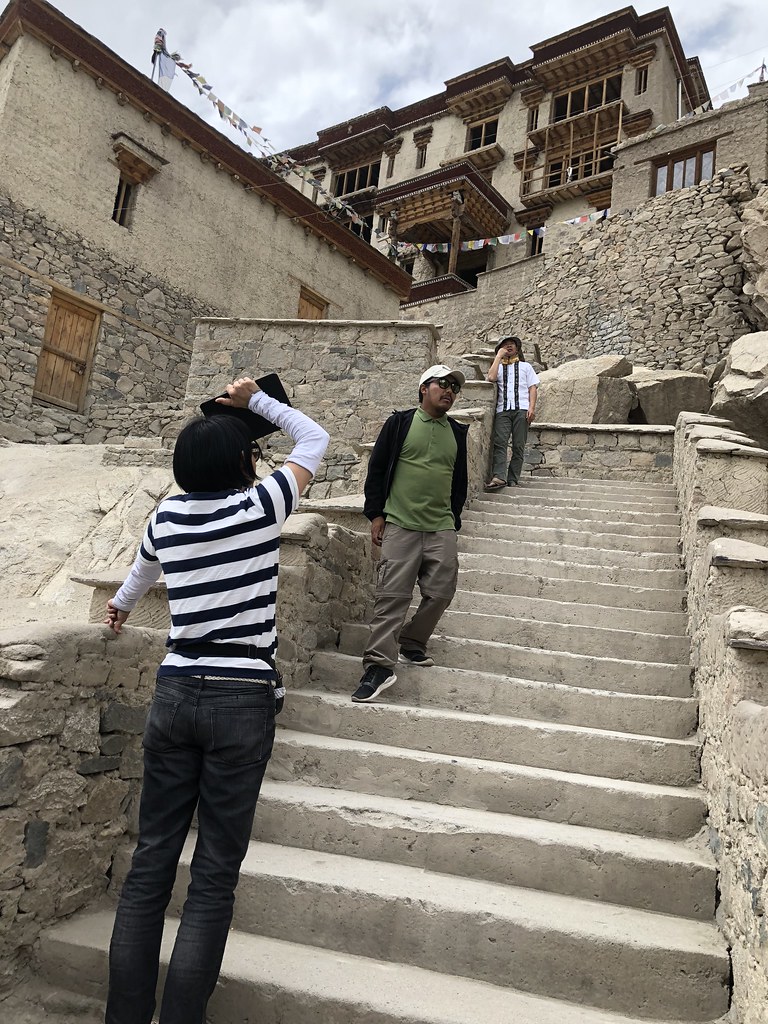
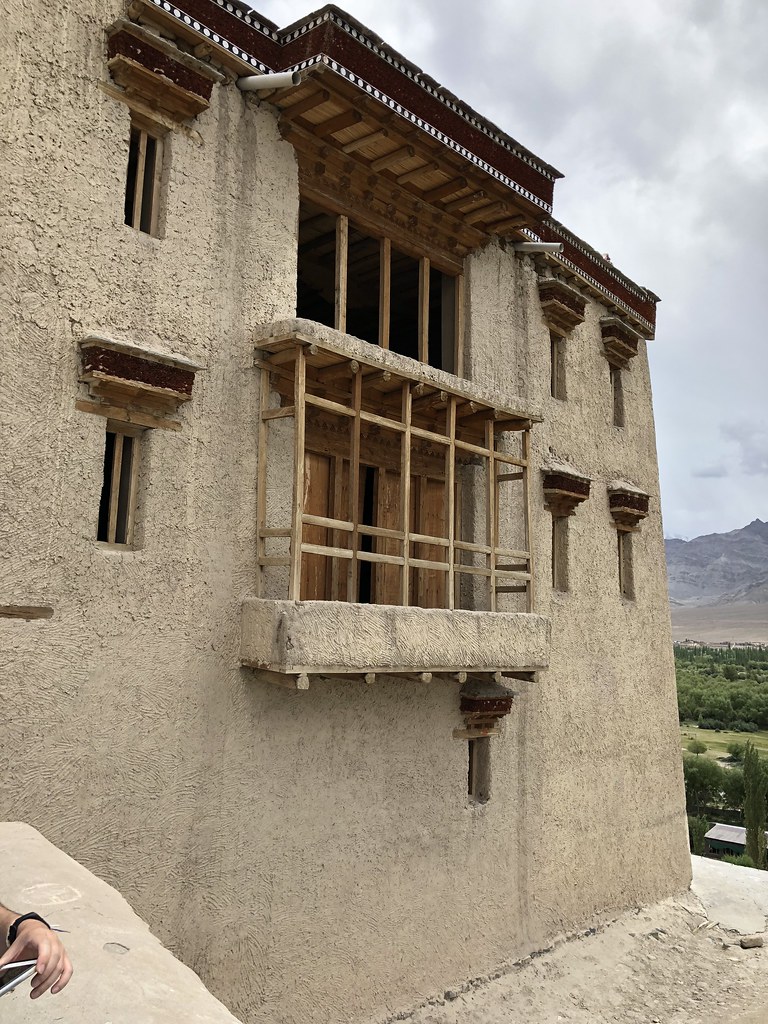
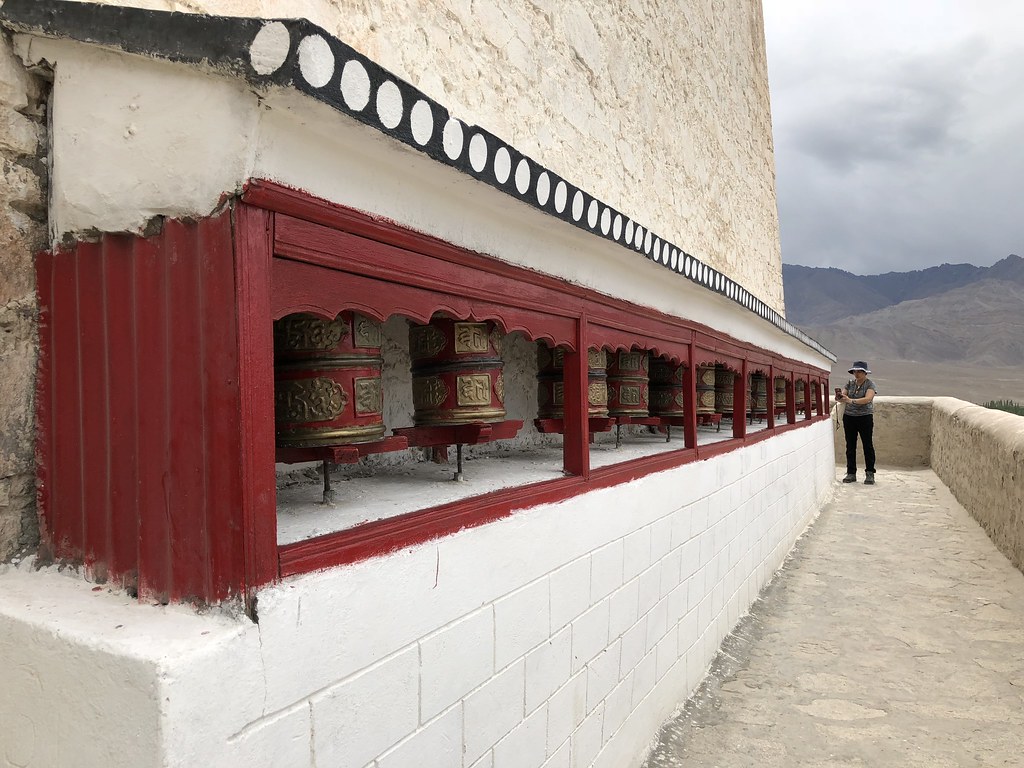
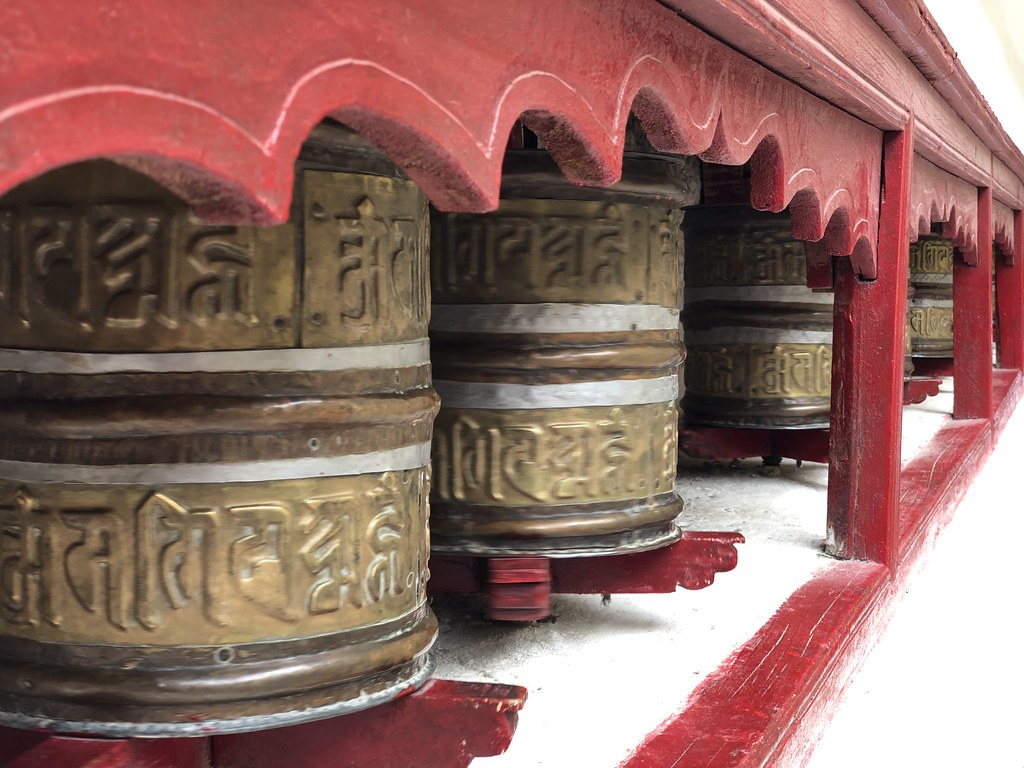
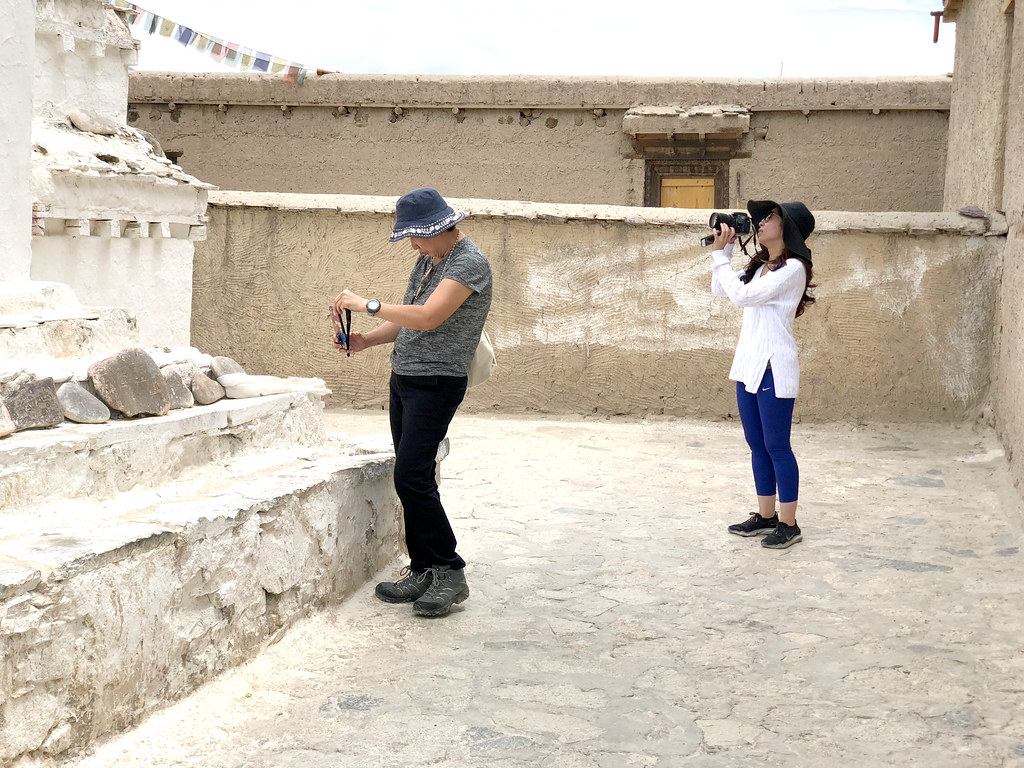
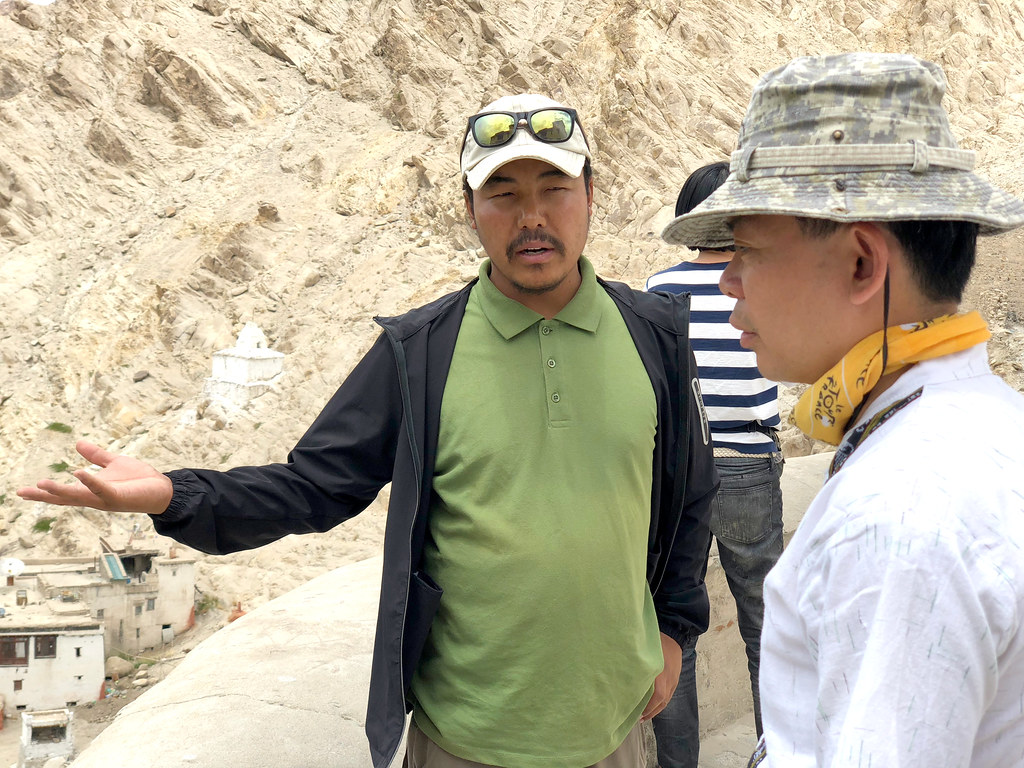
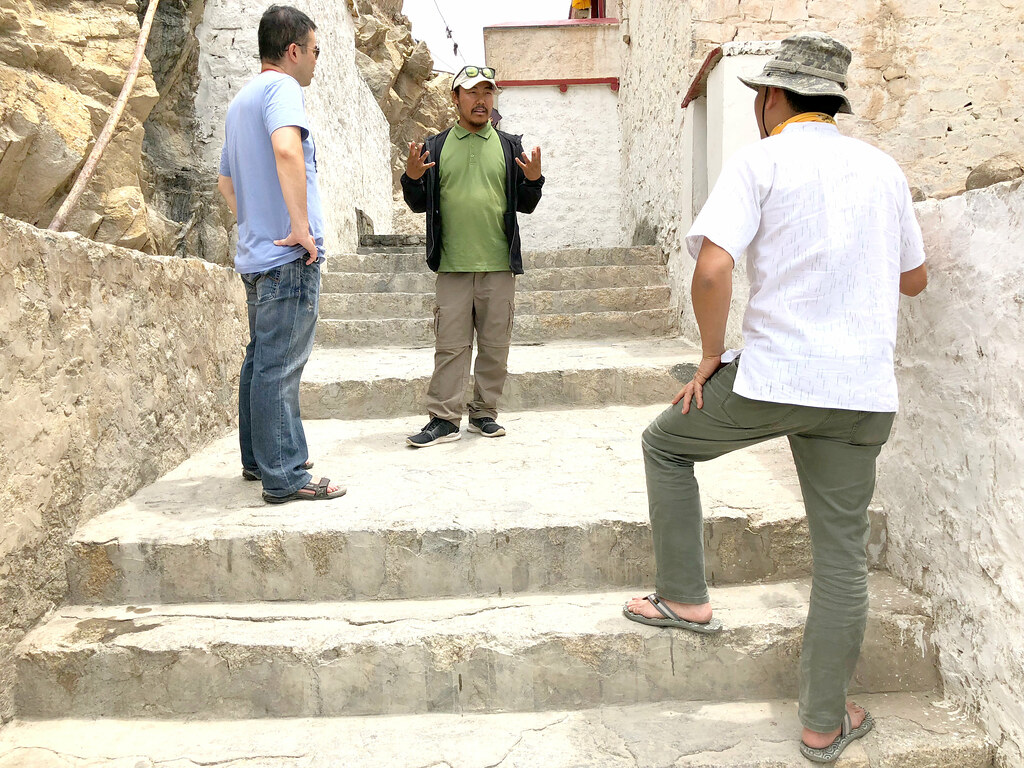
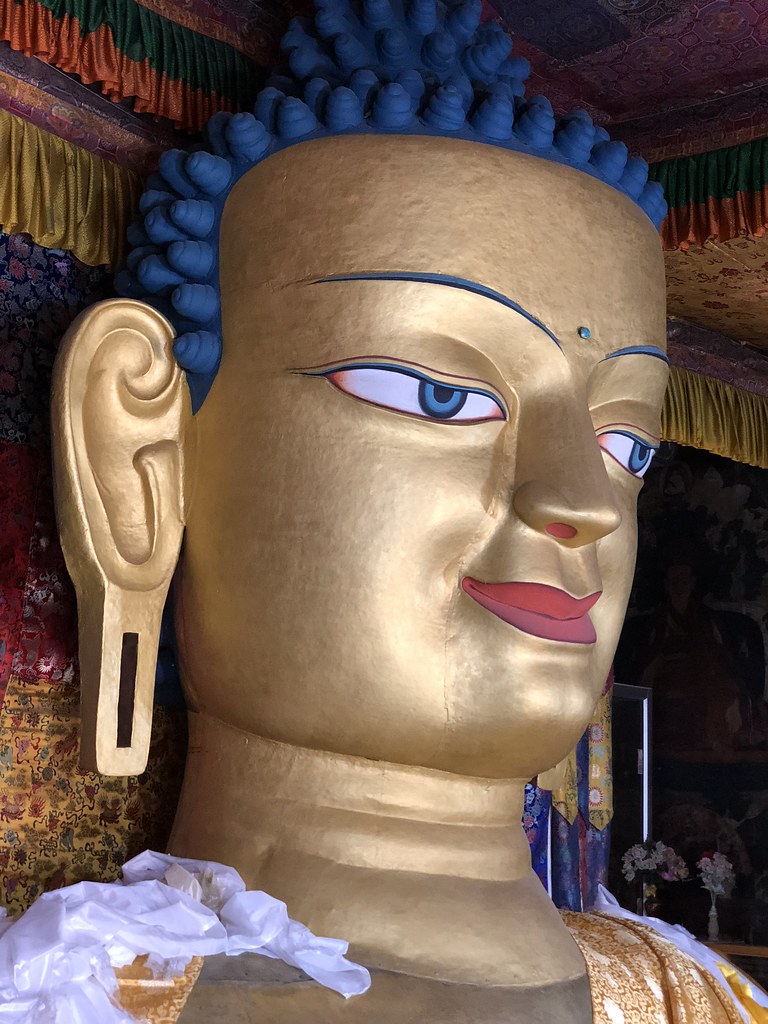
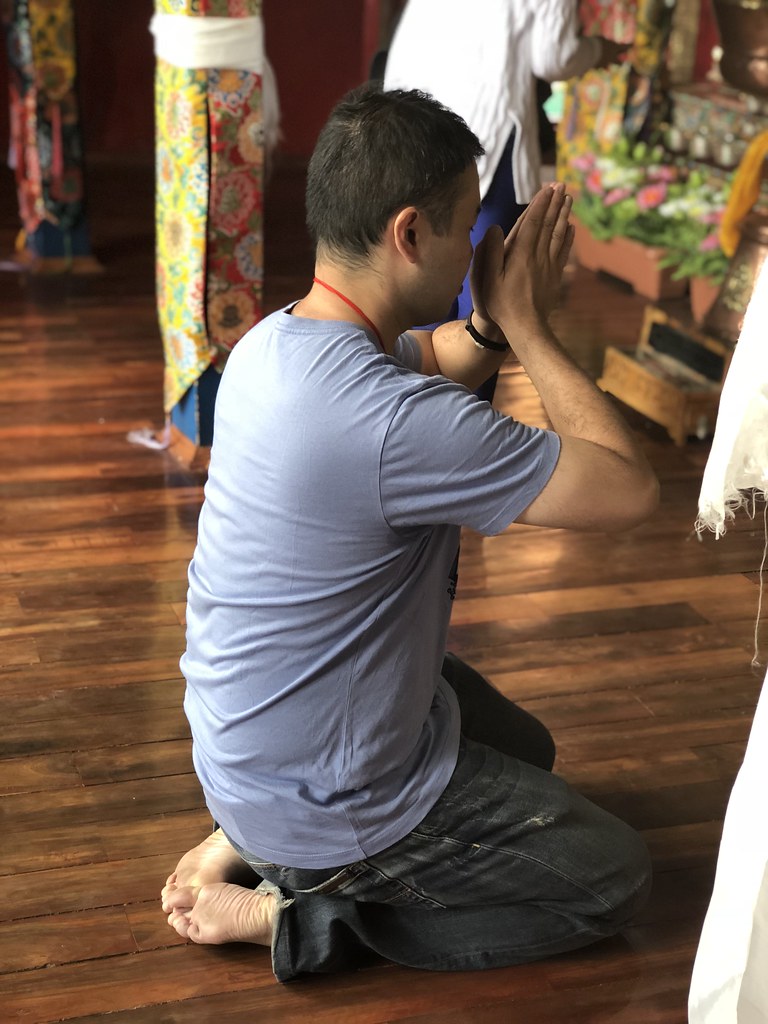
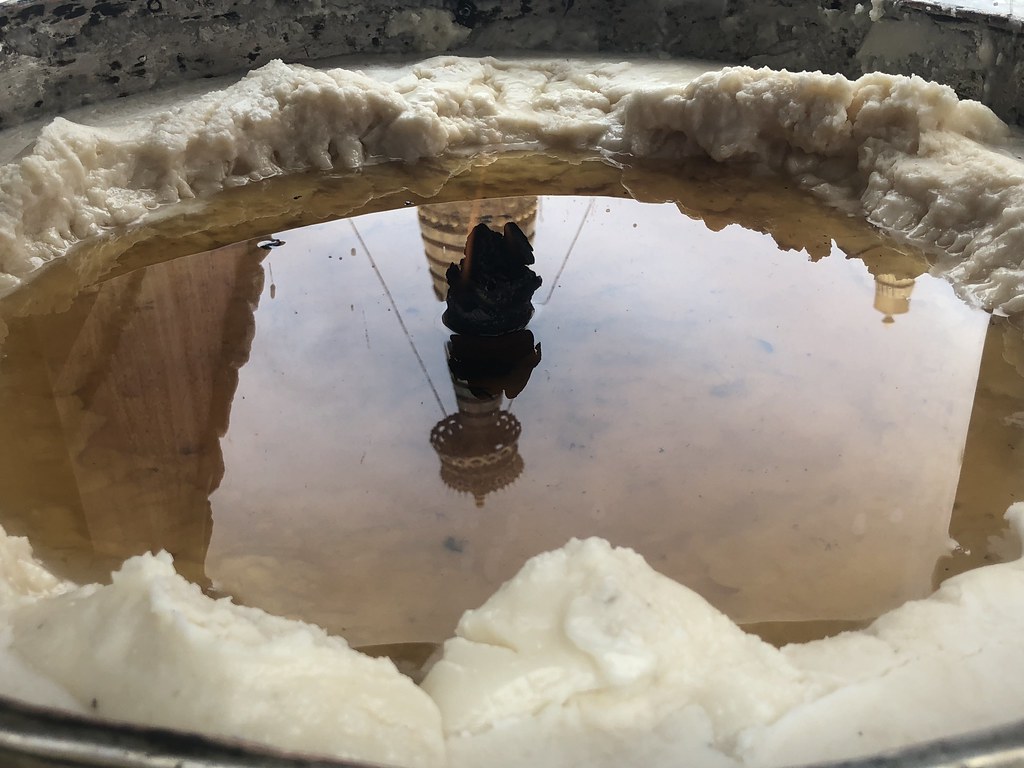

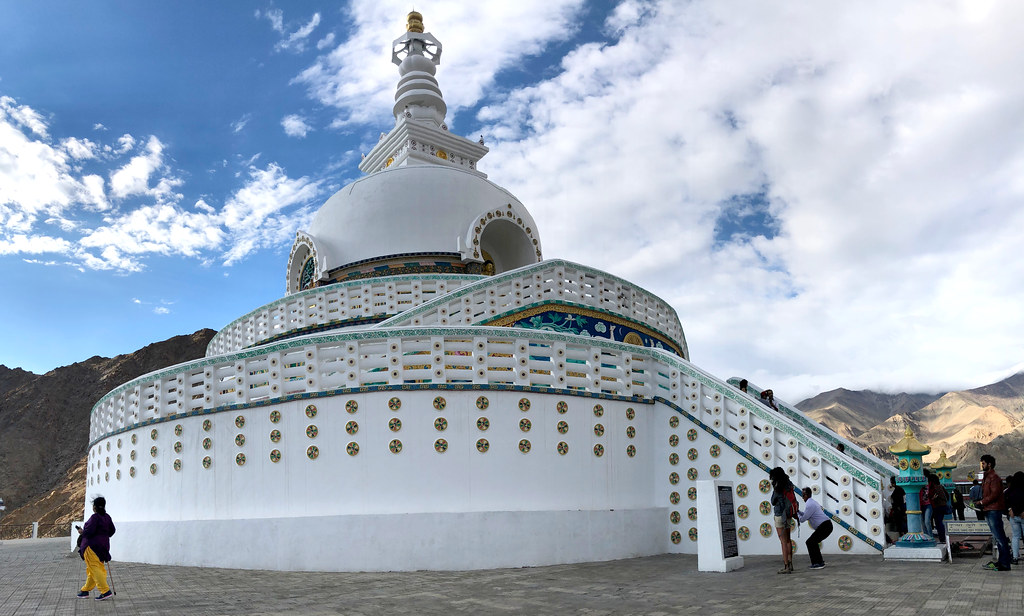
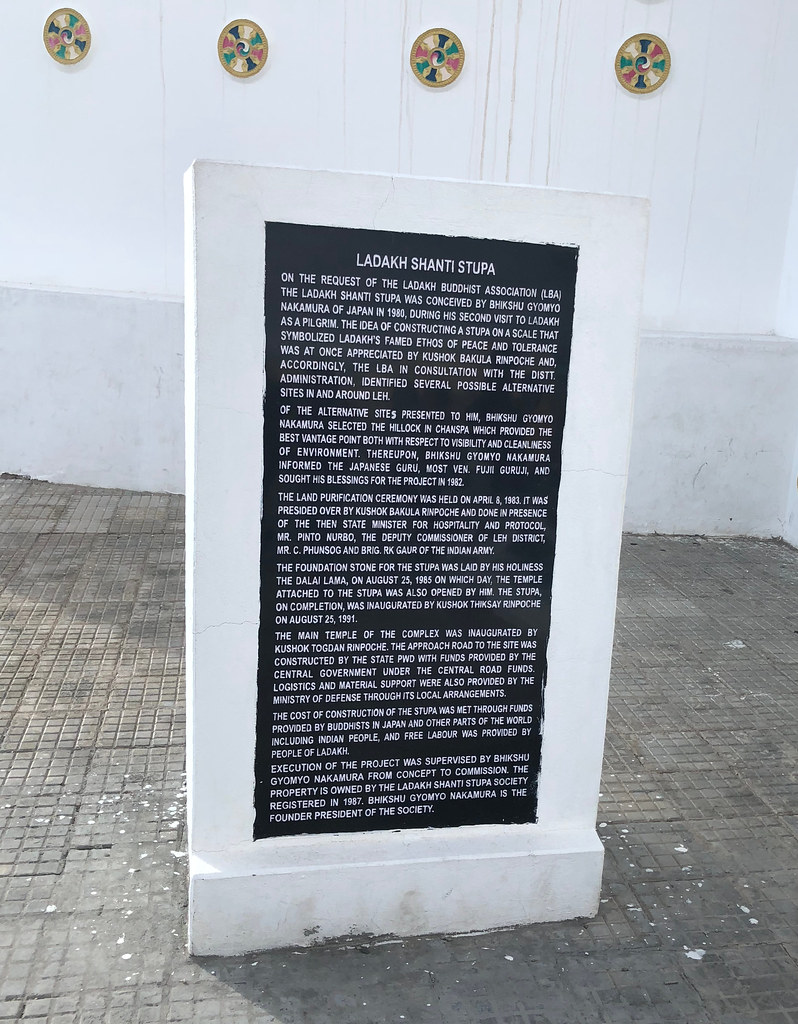
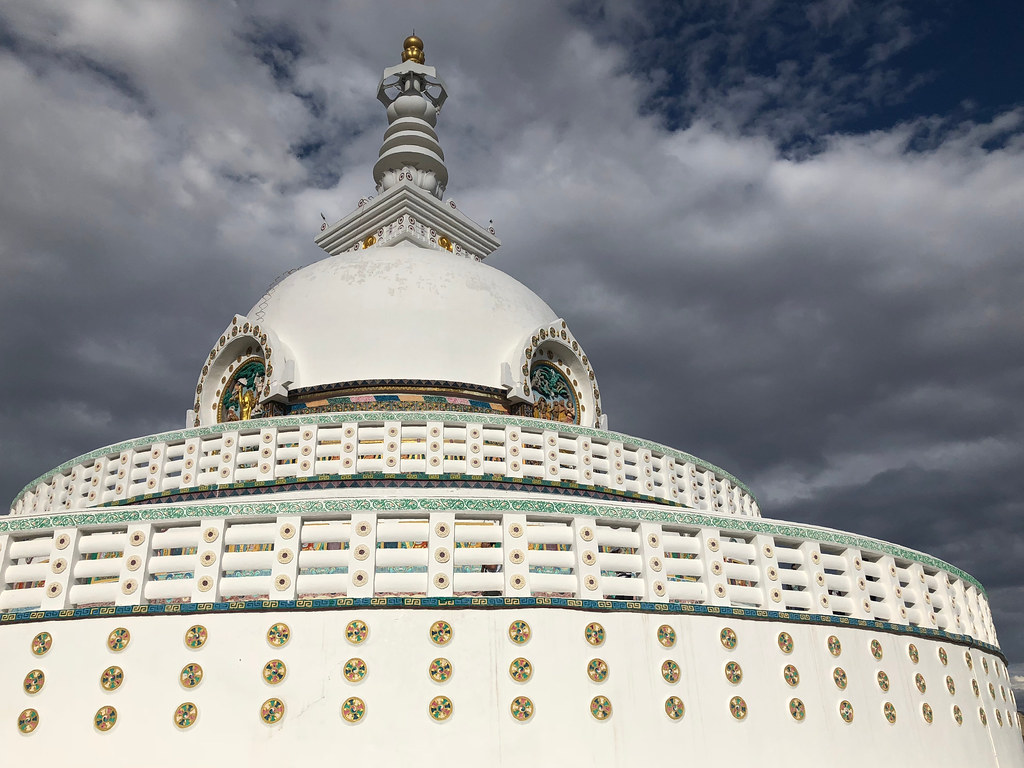
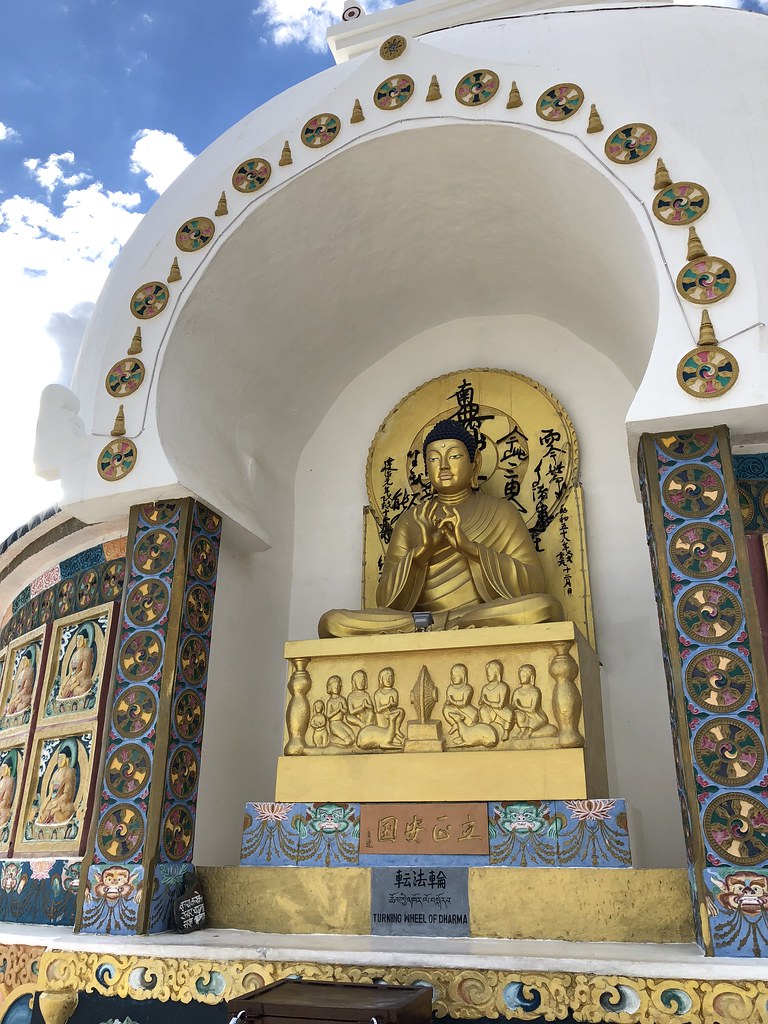

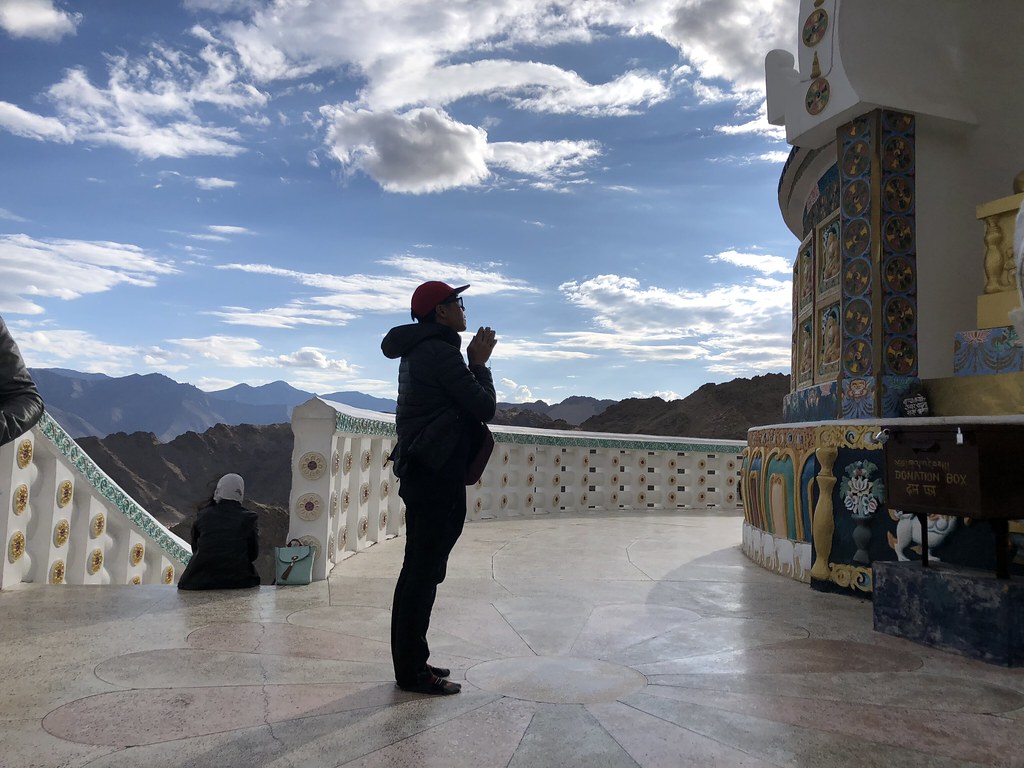
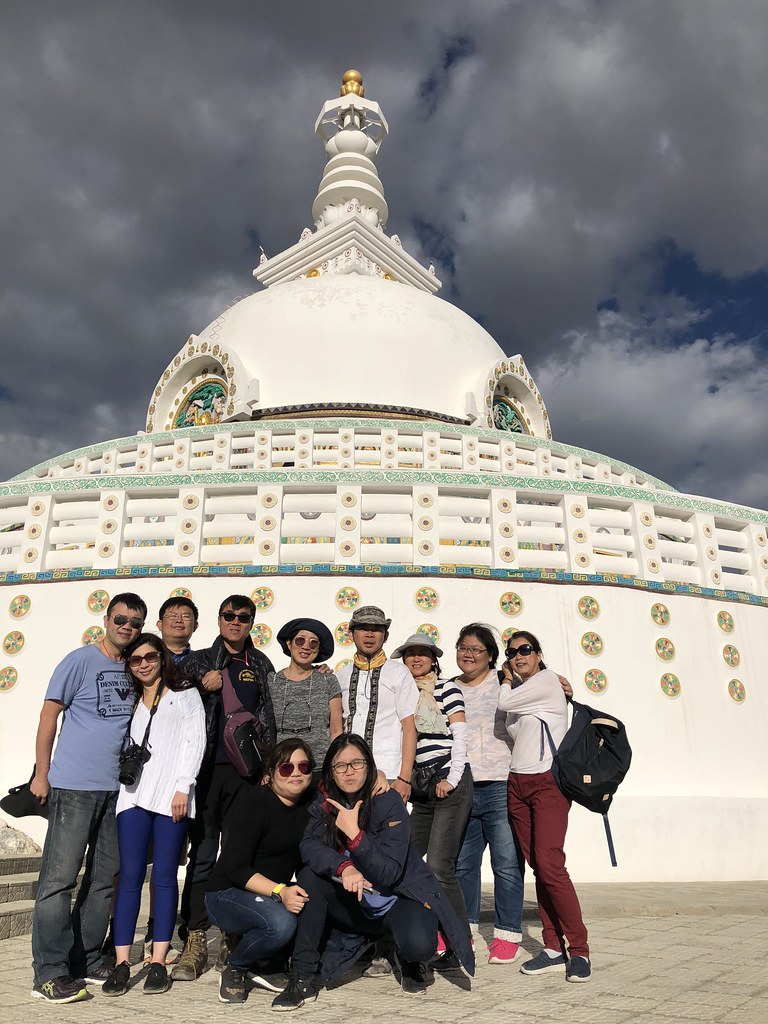
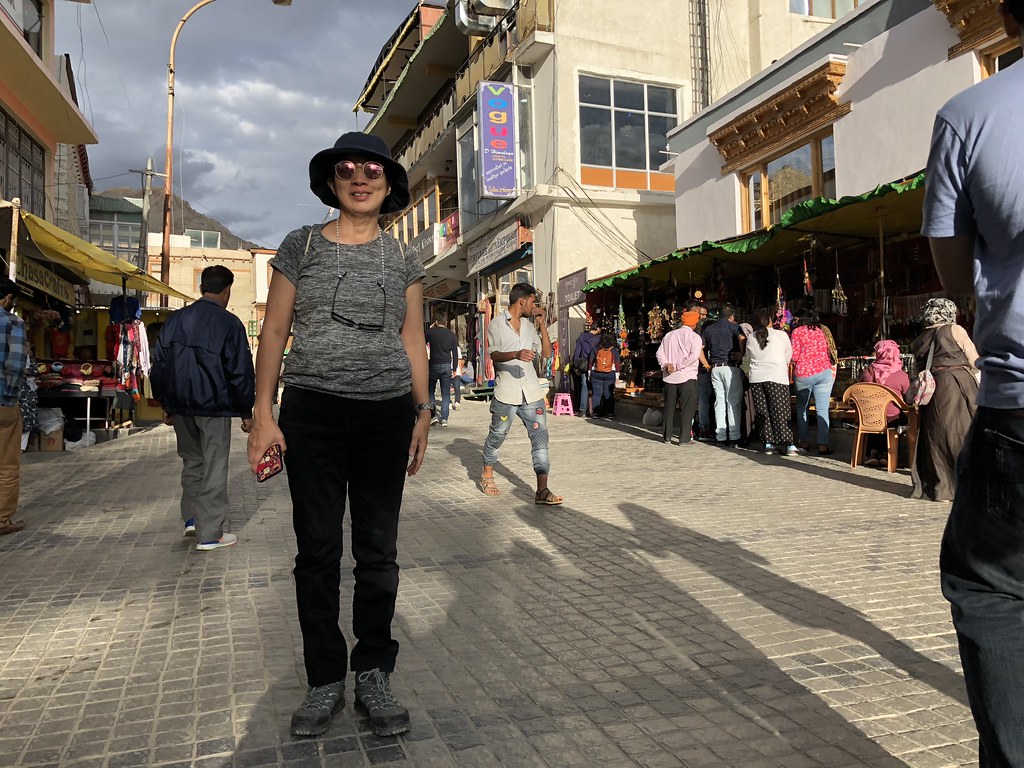
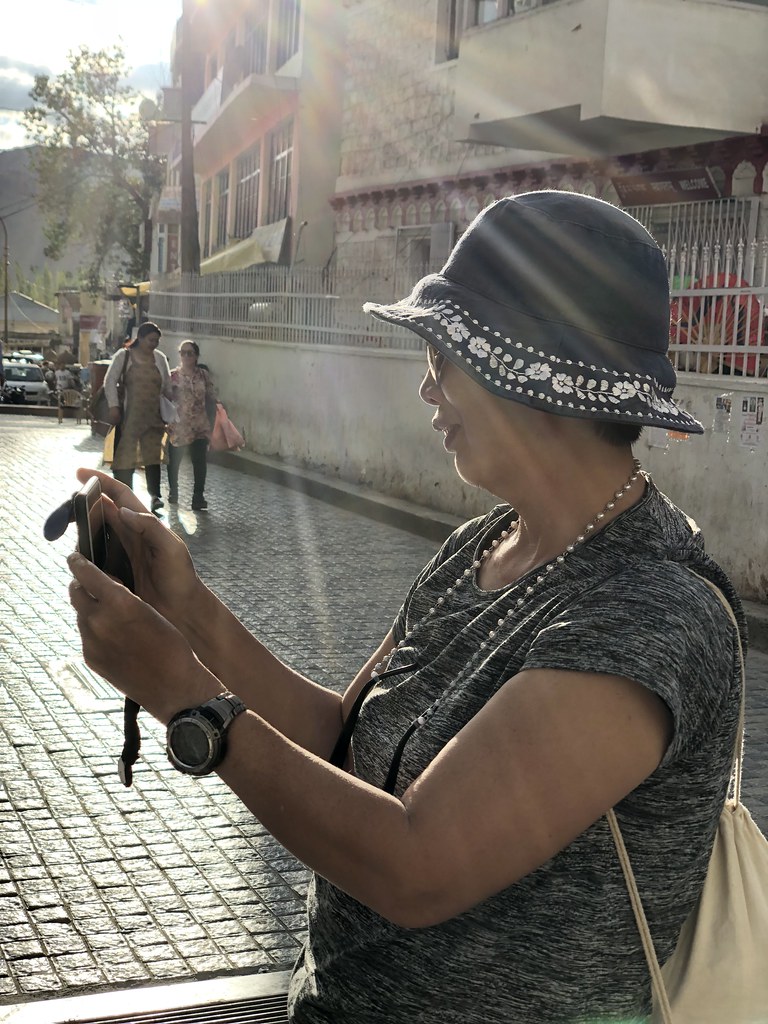
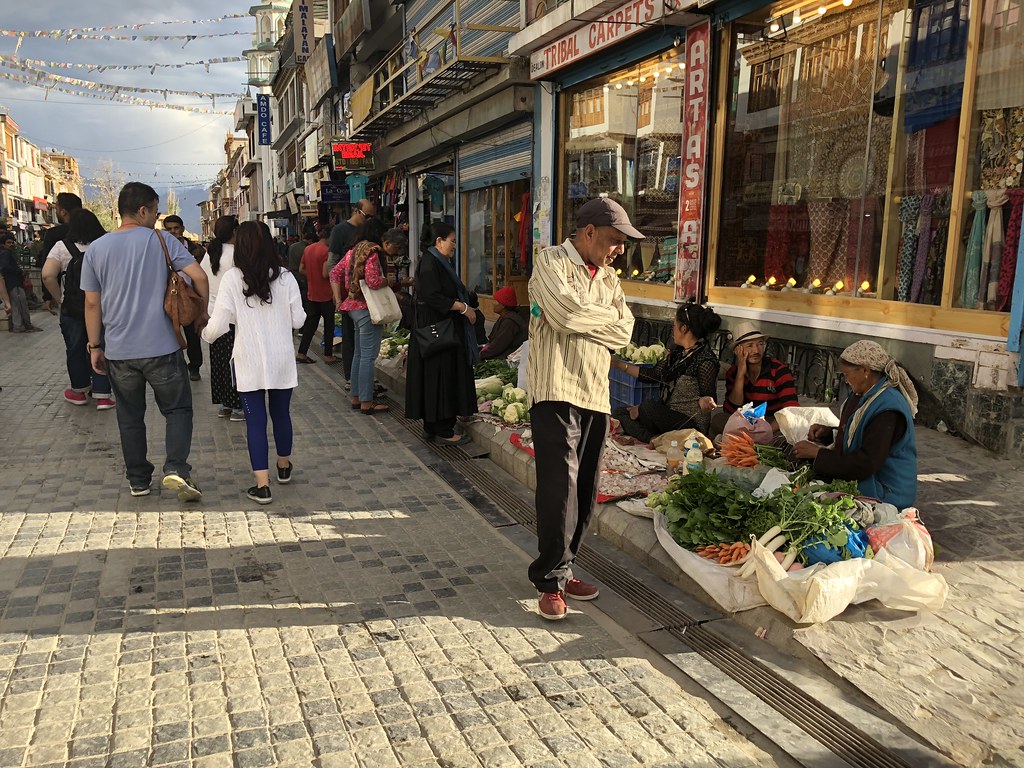
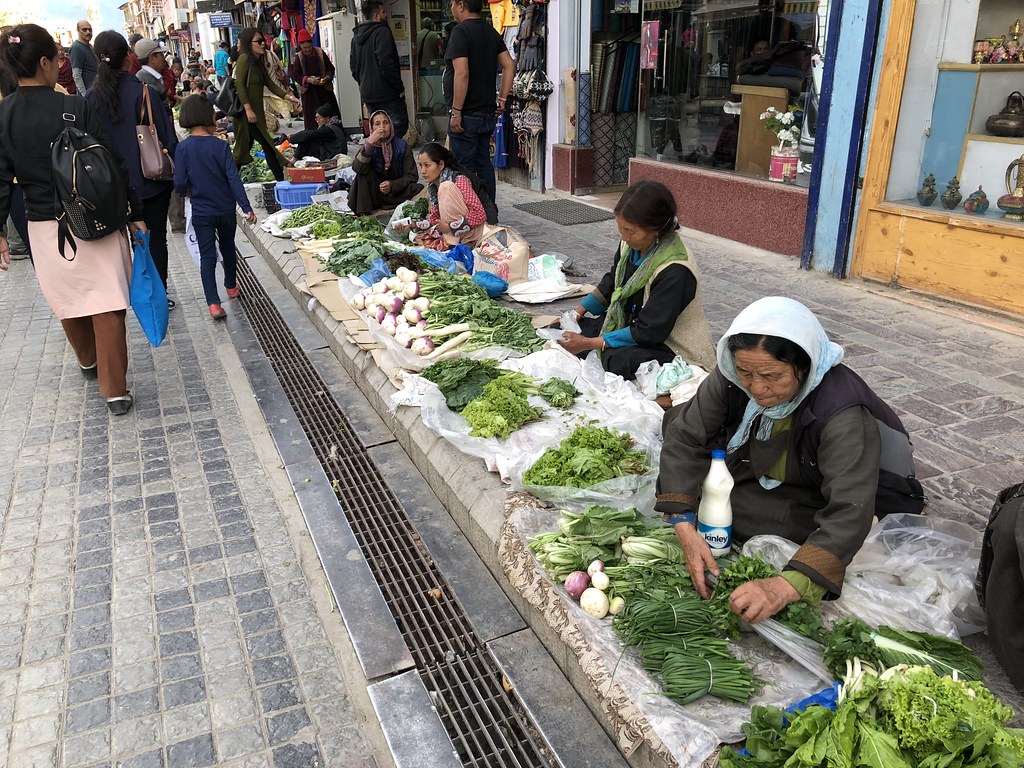
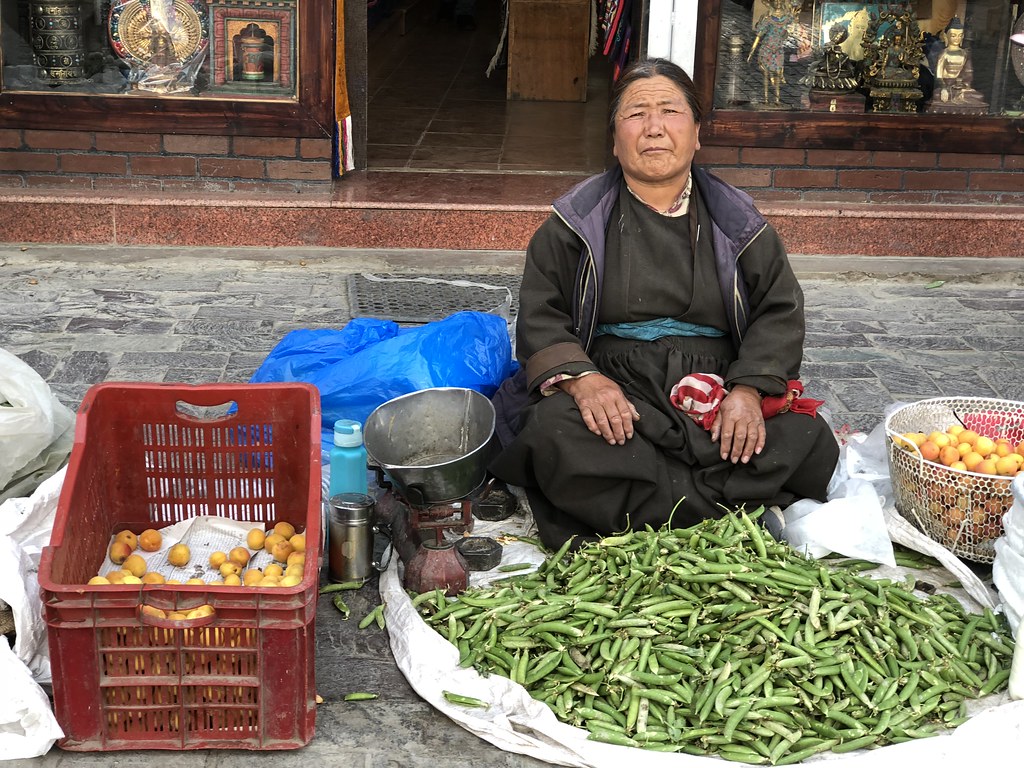
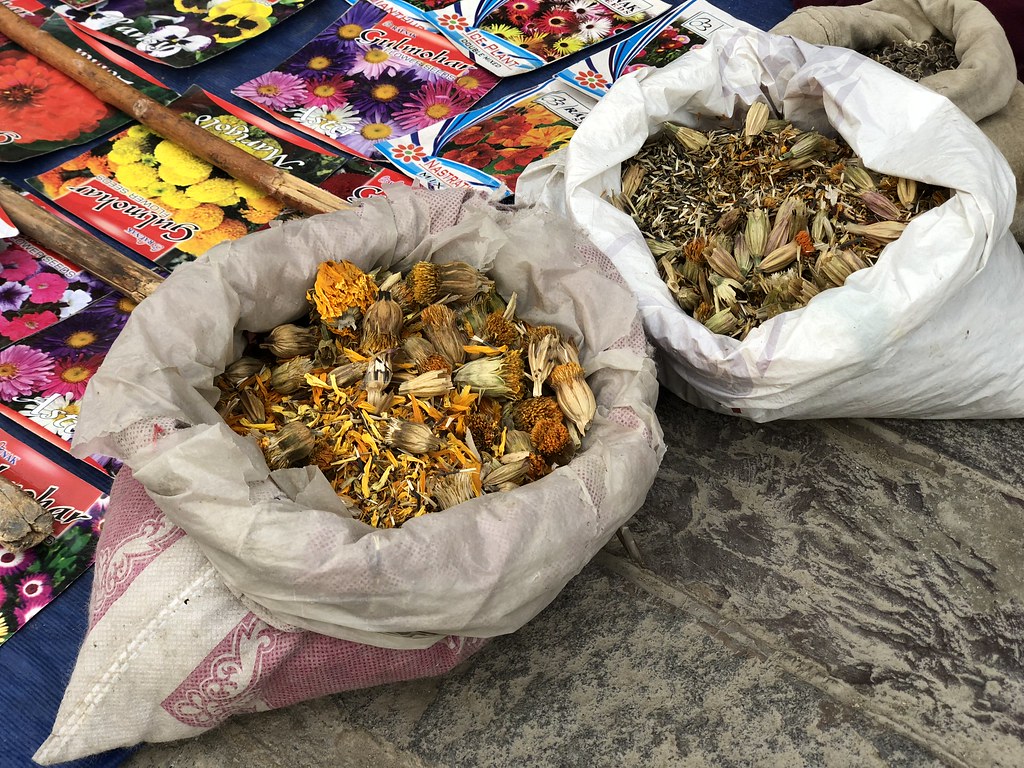
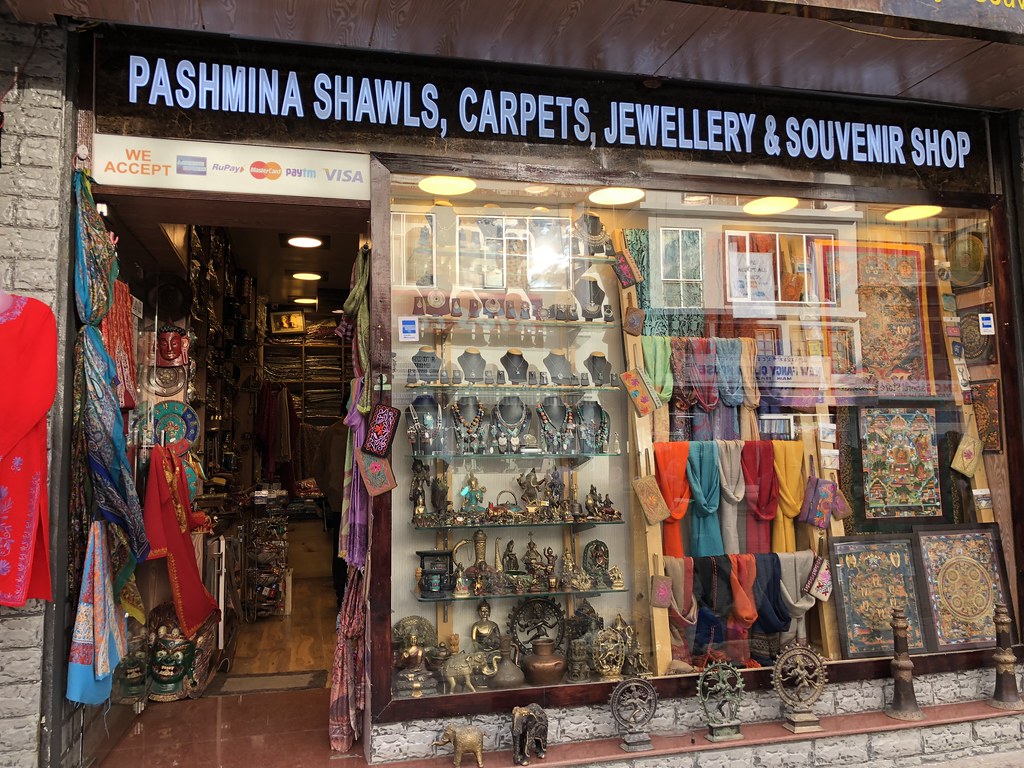
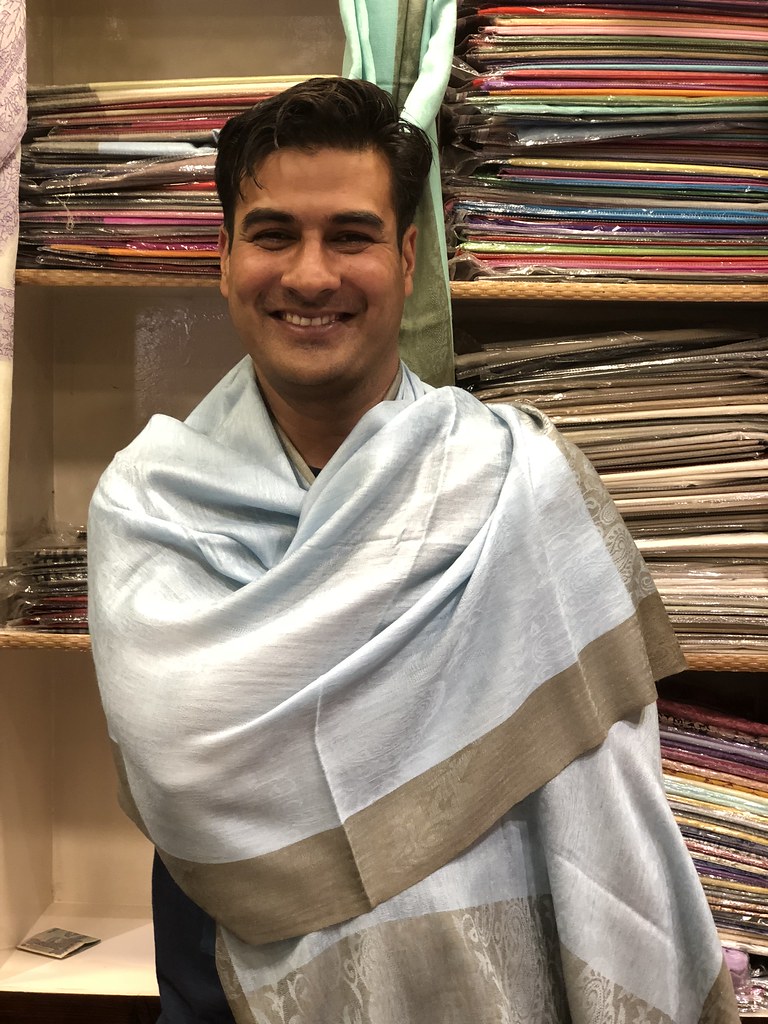
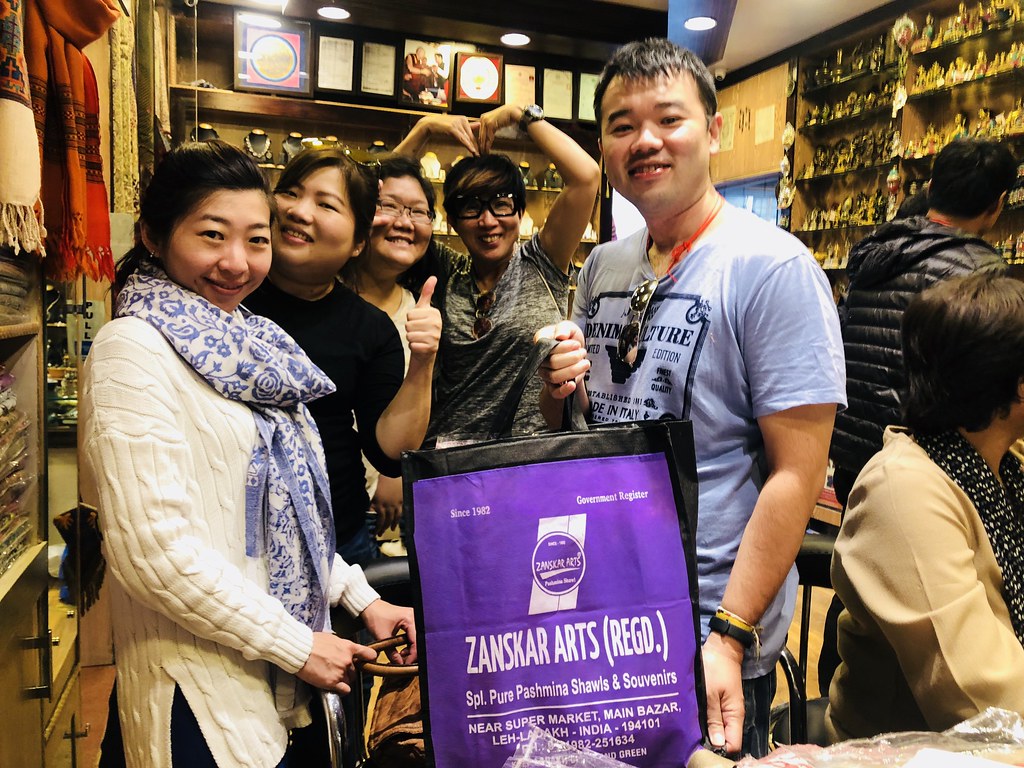
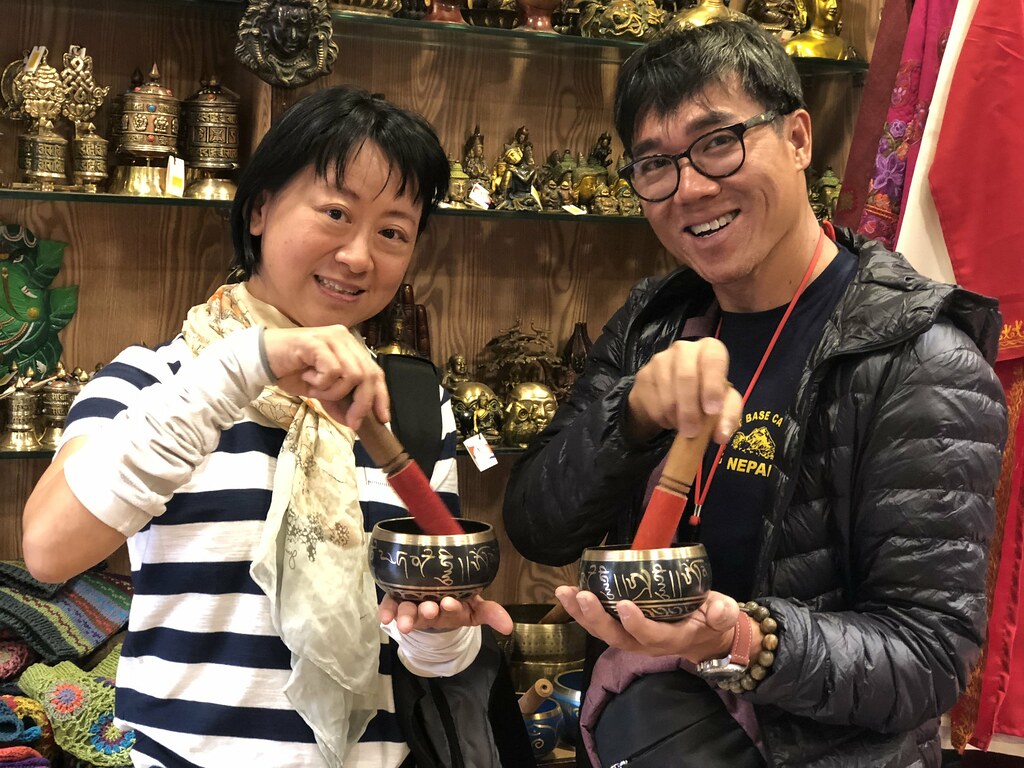
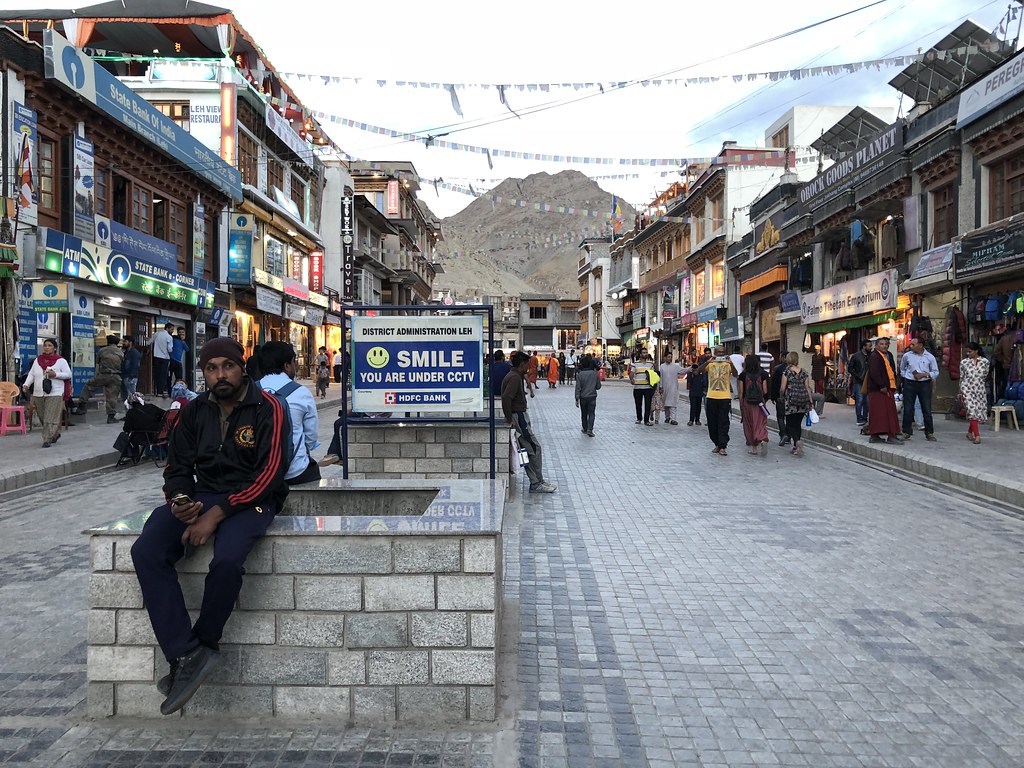
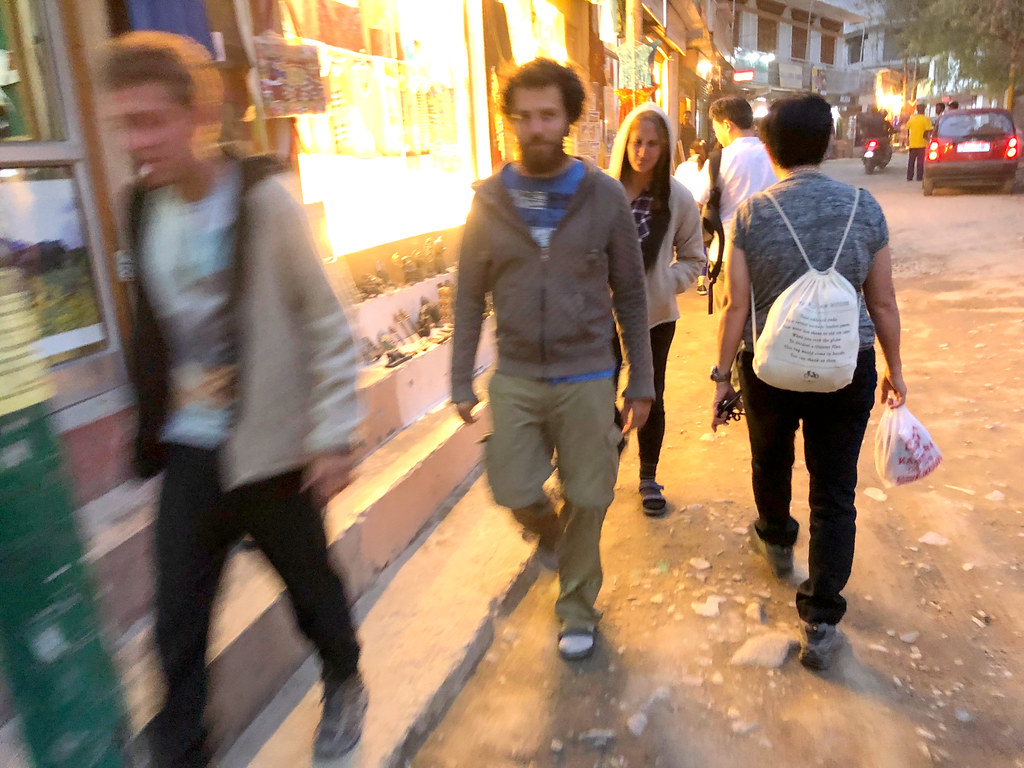
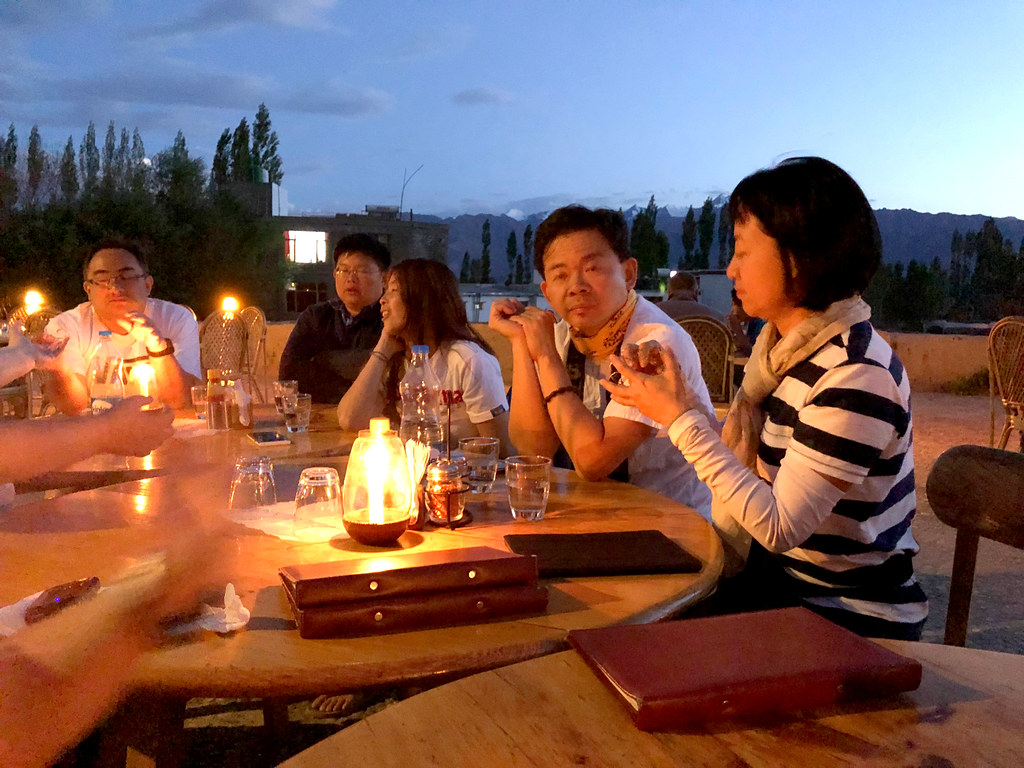
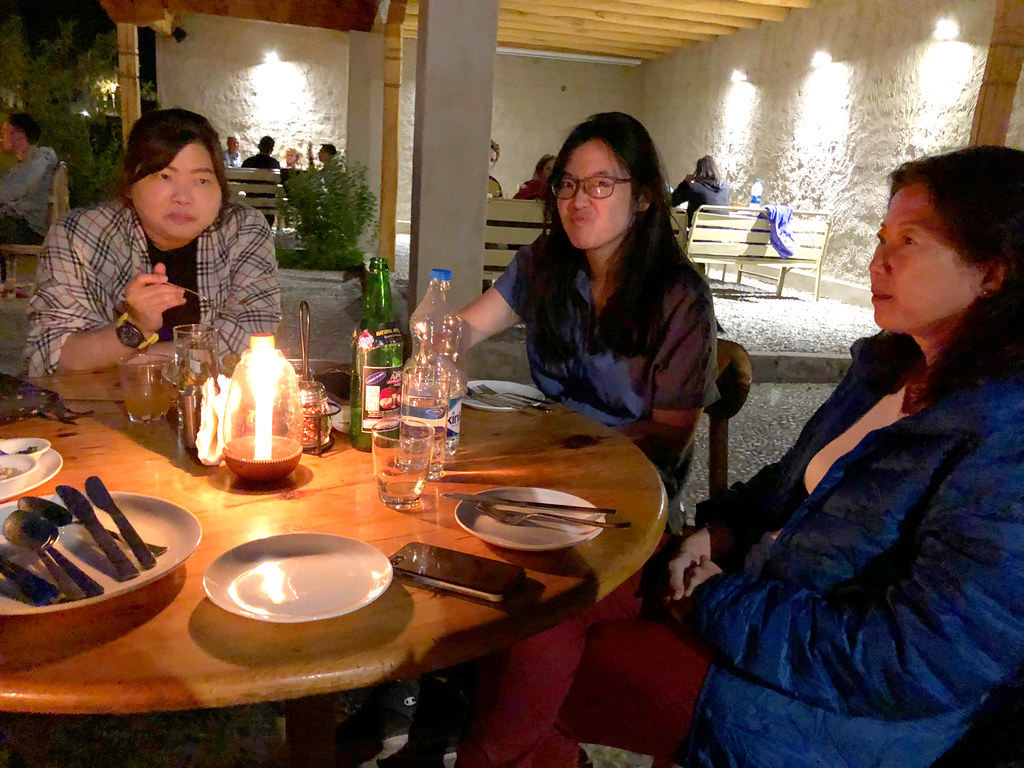
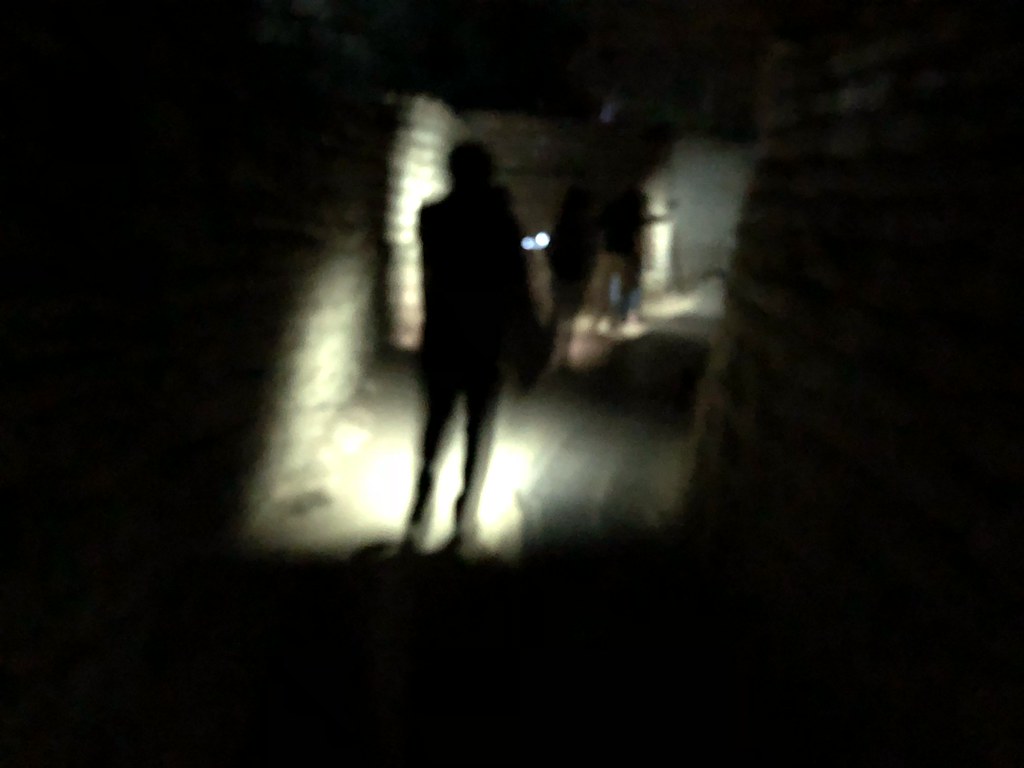
No comments:
Post a Comment